
















































































With the war in Ukraine causing economic uncertainty and soaring costs, Virgin Money takes a look at how new business ventures can help insulate farm businesses.
This year will go down in farming as one of the most tumultuous years on record, but diversification can be a way to manage volatility.
That was the message from Oliver Maxey, head of agriculture in England for Virgin Money, as he highlighted the impact of the war in Ukraine on every aspect of the economy.
“We have seen a massive increase in diesel, gas, electricity and fertiliser costs, not to mention a hike in most other farm input costs,” he said.
“We continue to see a shortage of available labour for harvesting and we have seen a reduction in the availability of new machinery.
“In addition, we have also endured a particularly dry growing season, causing reduced crop yields and this is already having a knock-on effect for the 2023 cropping year. On the upside, fortunately we have seen some increase in most, but not all, farm produce prices, which has ena bled farm businesses to maintain varying levels of profitability.”
But farmers were used to facing volatility.
“Summer rainfall rarely delivers the perfect amount, affecting crop and livestock yield and quality.
“Depending upon supply and demand, farm produce prices do move significantly up and down.
“Now we also have a change in Government support schemes, causing many farmers and farming estates to rethink their agricultural activity and approach,” he said.
Mr Maxey said one of the ways some farmers had tried to manage this volatility within their business is to create a diversified income stream from the farm holding that sits alongside the main farming enterprise.
“Earlier this year, we surveyed 300 Virgin Money farming custom ers, and a staggering 28 per cent had diversified in some form in the last six months,” he said.
“For many years, when farmers have looked to diversify, they have commonly established farm shops, let out the redundant traditional farm buildings, provided contract ing services to other farmers, or provided an area of land to pitch or store caravans.
“Well things seem to be chang ing and we are now seeing far more varied, imaginative and interesting diversified initiatives.
diversification initiatives at the moment is the installation of renew able energy technology, such as solar panels, wind turbines, biomass boil ers, or anaerobic digesters.
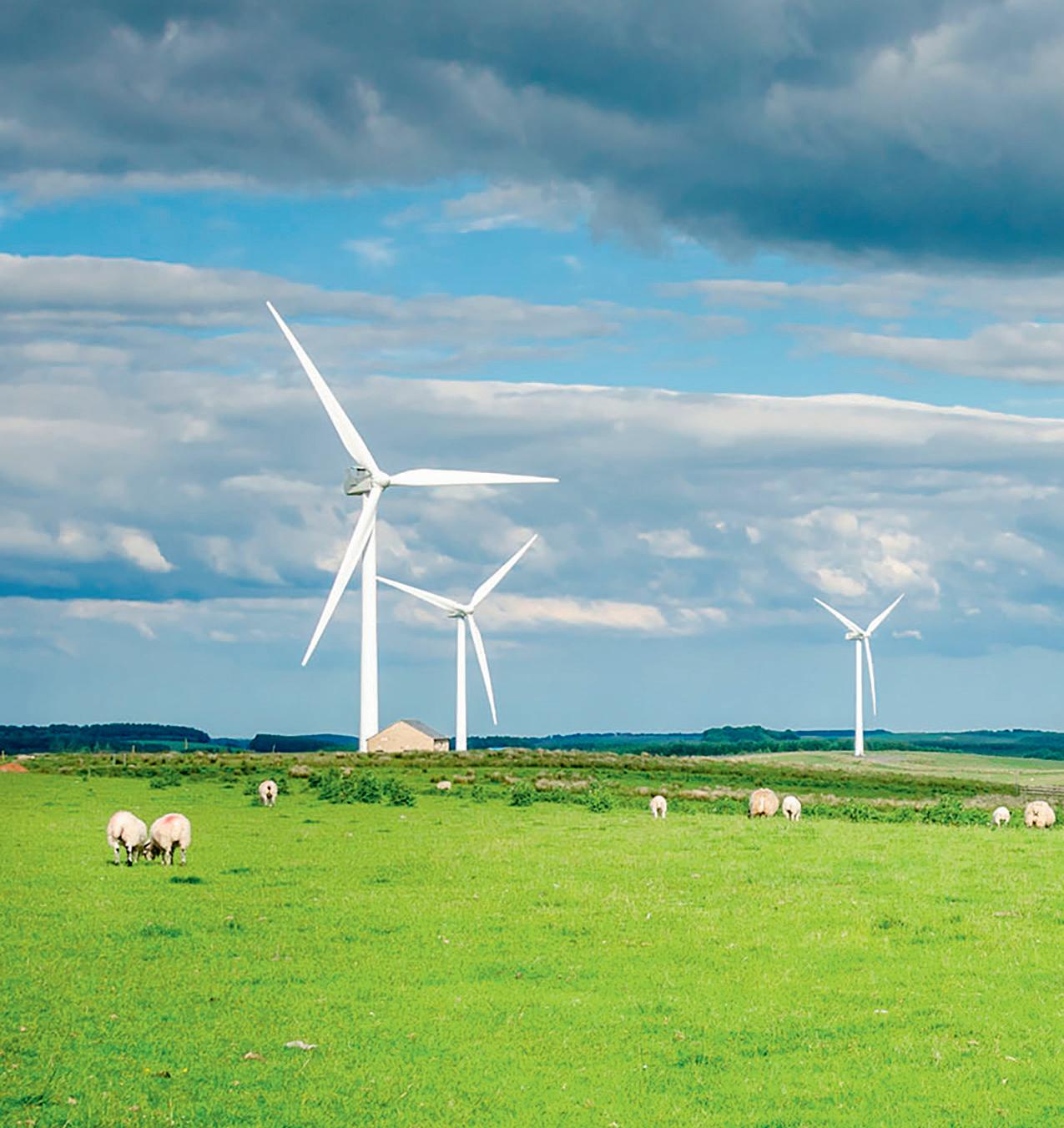
“The power generated can be for own use or for export to the Nation al Grid.”
Beyond this there was a whole range of different initiatives, with farmers getting creative with new ventures.
Mr Maxey said: “Some beef and lamb producers are creating enter prises to butcher, process and pack their own beef and lamb, selling locally into shops, pubs, restaurants, and to local people.

“Some are retailing stone for driveways or patios, other farmers are sourcing wood and selling logs.
“We are seeing farmers let land for recreational purposes, such as for walking, horse riding, cycling or dog walking.
in green waste for composting. The list goes on.”
From a banking point of view, Mr Maxey said generating diversified income streams is potentially very good for enhancing profitability and reducing some of the volatility in farm cashflows.
“However, you do need to plan and tread carefully to ensure you make the diversified initiative a success,” he said.
“Before making a move to diver sify, there are several questions that you need to think about in advance.”
These included taking a look at where the farmer and their families interests were.
“If you are not interested in something you are unlikely to do well at it,” he said.
“Be honest with yourself, what are your skills and abilities? People will not pay for rubbish.”
OLIVER MAXEY“Given the hike in gas and electric ity costs, one of the most common
“Some are making basic farm machinery and equipment, others are buying old classic machinery and completely refurbishing it for resale to collectors.
“We are also seeing farmers take
Mr Maxey also advised looking into what resources were available to the business which would not detract from the current farming
Given the hike in gas and electricity costs, one of the most common diversification initiatives at the moment is the installation of renewable energy technology
Installation of renewable energy technology, such as solar panels and wind turbines, are growing in popularity.

business, such as land, buildings and labour.

It was also important to think about what impact the diversified business would have on current farming activities.
He also urged farmers to research the potential market.
“What, who or where is your
market? Who and why is someone going to buy your product or service?”
It was also a good idea to look if the enterprise can ‘test the market’ without committing too much capital.
Farmers should also think about
the minimum investment needed, in both money and time, to get the venture started.
People should also consider what professional advice, support and funding is available to help the business get started and set off on the right track.
“Diversified income streams


really can put some stability into your farm business, which in the end can reduce the impacts of volatile crop and livestock prices.
“However, do think about these questions carefully to make sure that the diversification is the right and appropriate investment for your business.”

Ahead of an appearance at the Farm Business Innovation Show, Alex Black spoke to YouTube farmer Tom Pemberton to find out how his channel became a hit.
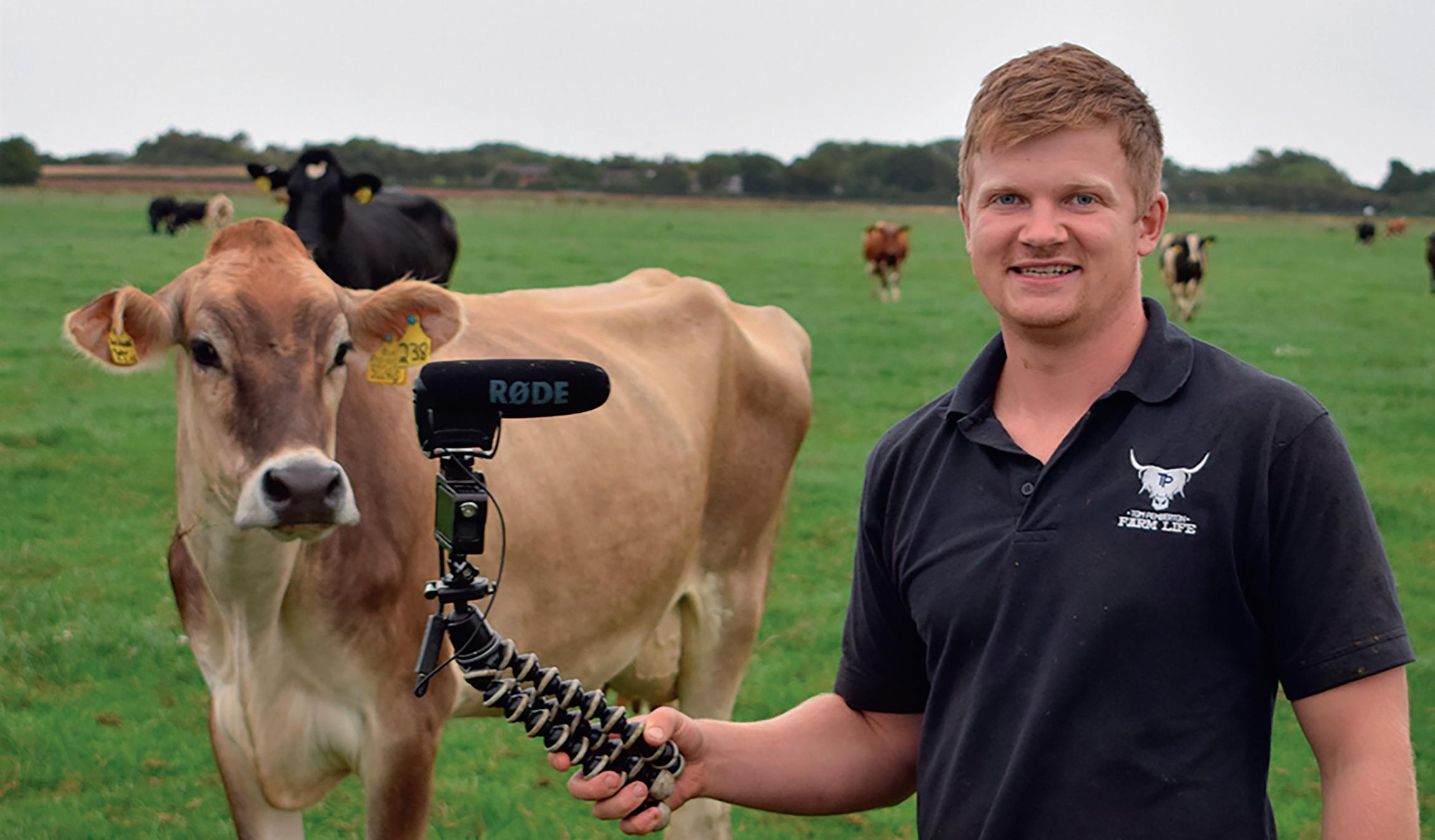
Jump in and get started on your diversification project and push through any difficulties in the early days to make a success of it.
That was the message from YouTube star and Lancashire farmer Tom Pemberton, speaking ahead of the Farm Business Innovation Show on November 2-3.
Six years ago, in September 2016, Tom posted his first YouTube video. After purchasing a raw milk vending machine, he decided to create a video showcasing it.
“My idea was to communicate with the customers and show them how to use it. It took me about 20 takes. It was really bad,” he said.
“I was really serious and really tense. But that video is still up there on YouTube,” he said.
He added his then girlfriend, now wife, had really helped him out by directing him.
“When you start off you are not going to be very good. It is like everything, it is just trial and error.”
Tom said he had pushed on and realised he had something the public wanted to see and started posting videos regularly online.
“Consistency is the key to everything,” he said.
Now, Tom’s account has more than
He said he never expected to become an influencer.
“I am the most average bloke. I am milking 120 cows in the north west of England. If I can do it, anyone can.”
Tom advised them to ‘go for it’.
“It is worth starting small and building up. Do not invest shedloads at once. It is easy to borrow a lot of money and then take on too much.
“If you build it up gradually then you are in control of it.”
When starting out on social media, Tom urged people to just jump in and get started.
“Nobody is good at it when they first start out. Those first 20 videos will not be good. Just push on through.”
He added social media would not be for everyone, but they had to weigh up their own strengths and decide which diversification venture would be best for their business.
“Not everyone is going to want to do YouTube videos,” he said.

But Tom believed anyone could succeed in their diversification venture, whatever they decided to do.
TOM PEMBERTON490,000 subscribers on YouTube, showcasing life on his farm in Lytham.
He has also made appearances on television and radio and has presented
Tom said the farm had always looked to diversify with enterprises offering doorstep deliveries, having a raw milk vending machine and a farm shop, cutting out the middleman and selling directly to the public.
“We could not get any bigger as we could not buy any land around us, a problem that a lot of farms have had.”
For farmers starting out or considering new diversification options,
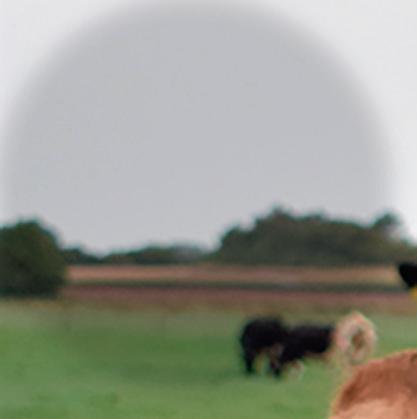
“I wrote a book and it was a Sunday Times best seller despite being dyslexic. I am very proud of that,” he added.
FARM BUSINESS INNOVATION SHOW Tom Pemberton will be appearing at the Farm Business Innovation Show at the NEC, Birmingham. The event runs from November 2-3 and more information for the free to attend event can be found at farmbusinessshow.co.uk
Nobody is good at it when they first start out. Those first 20 videos will not be good. Just push on through
Environment Bank will be exhibiting at the Farm Business Innovation Show this November, where you can meet the team at their stand.
To get started now, and to find out what your habitat and income options are, call our team on 01904 202 990 or register your land at environmentbank.com

With increased interest in countryside holidays and experiences, Savills’ Hugh Vere Nicoll takes a look at the opportunities in letting sites.
Recent growth in staycations has seen a significant increase in leisure operators looking for scenic locations in rural settings to set up glamping and small bespoke lodge developments.
And there is a range of different models and enterprises which could be attractive to landowners and farmers.
Savills’ tourism, leisure and events consultant Hugh Vere Nicoll highlighted innovative designs including luxury treehouses, cabins and even converted shipping containers.
He said: “Pre-Covid-19, this type of leisure tourism enterprise tended to be operated in-hand by the owner of the land, but that has changed quite significantly in response to the growing market for staycations.
“Today, there are operators looking to lease land, invest in new facilities and operate the business themselves, meaning the landowner does not have to be involved in day-to-day operations.
“Alternatively, a landowner can opt for a hybrid model where they oversee day-to-day operations and the operator is responsible for marketing, sales and guest communication.”
He added rents could be ‘attractive’ and were usually a blend of part fixed and part turnover-based.

Prime tourism spots, such as Cornwall, the Lake District and the Highlands, remained the most popular choices for holidaymakers.
However, these are largely seasonal destinations.
Operators were now equally interested in other areas across the UK for developing year-round venues, he said.
The most attractive sites were easily accessible from major cities and offered picturesque, secluded locations for short break holidays.
“Our experience shows the right quality of accommodation and service level is more important than the location.”
But it was not only holiday accommodation operators who were looking for attractive rural land to rent, either on short-term or longer term basis.
“Operators in the leisure sector are targeting farms and estates to develop businesses such as woodland play venues. Educational bushcraft schools are gaining in popularity and are willing to pay
attractive rents for blocks of private woodland to set up summer camps.”
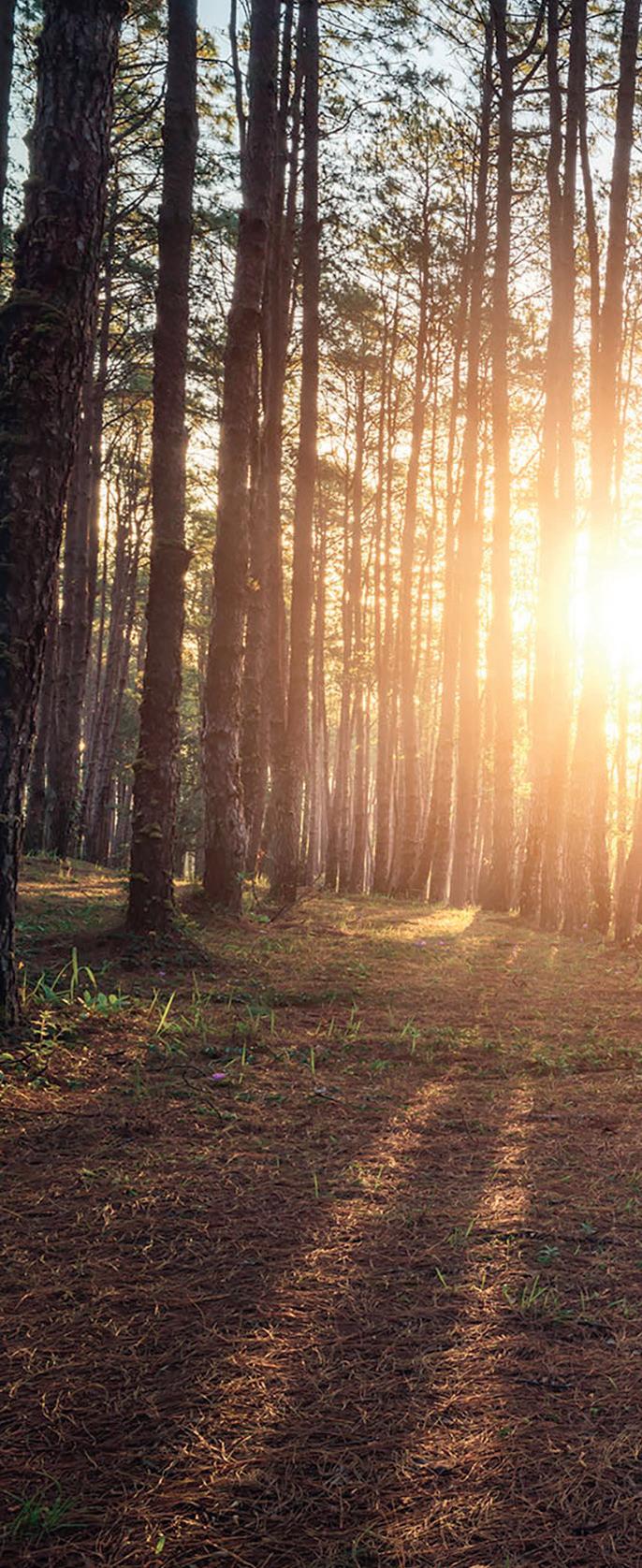
Dog day care centres were also on the rise, perhaps due to the significant increase in dog owners during the Covid-19 lockdowns.
“Level sites which can be fenced, have good road access and are near to large towns and cities are highly sought after by operators,” he added.
“Private dog walking paddocks also flourish, are relatively cheap to set up, easily managed and with attractive returns. One note of caution, the number of sites has grown rapidly and before embarking on a new venture it is important to establish the market is not already saturated within your locality.
“Also, planning permission might be required, alongside some sort of dog-waste management scheme.”
For those looking for opportunities on a shorter term basis, rural estates and farms were popular venues for outdoor events and festivals.
“The current boom in the UK filming industry means there is huge demand for country houses, rural land and farm buildings for location filming,” he said.
“The lack of indoor studio space
There are operators looking to lease land, invest in new facilities and operate the business themselves.
close to London also means TV and film production companies are renting agricultural and commercial buildings in rural areas to build temporary studio facilities.
“Fees paid by the larger streaming services, such as Netflix, Amazon Prime and Disney, can be very attractive. Secondary spend opportunities can also be generated via increased visitor numbers to film locations.”
Across the tourism, leisure and events sectors, opportunities for arm’s length arrangements have never been greater and there is significant potential for landowners to generate useful additional income, where there is no conflict with the existing business.
Mr Vere Nicoll said: “We would always recommend applying a few first principles before embarking upon any form of new venture, with or without a third party operator.

“You need to consider what the market opportunity might be, including what you have on-site and what could be developed.
“The same rules regarding safety and welfare apply to projects of all sizes, such as having a well-lit car park, washing and toilet facilities and speaking to your insurance provider about public liability cover.
HUGH VERE NICOLL“And finally, keep in mind any change-of-use implication when it comes to tax planning.”
The current boom in the UK filming industry means there is huge demand for country houses, rural land and farm buildings for location filming
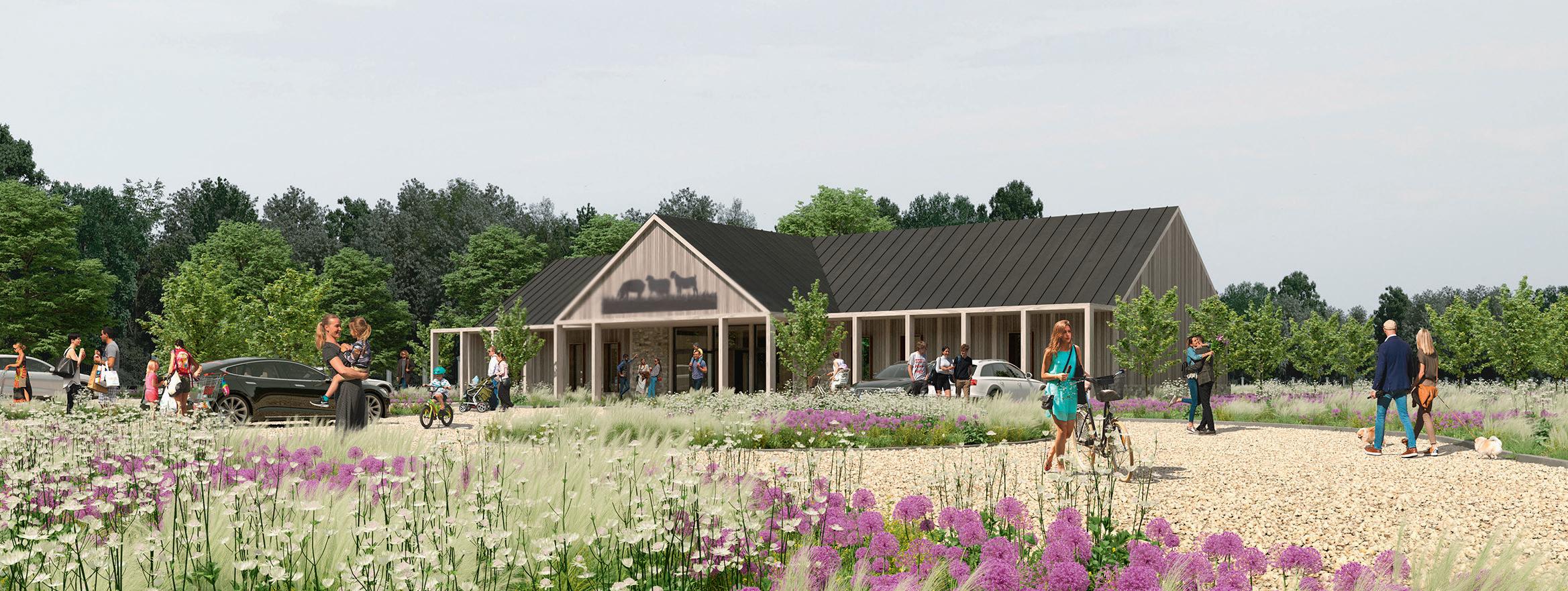
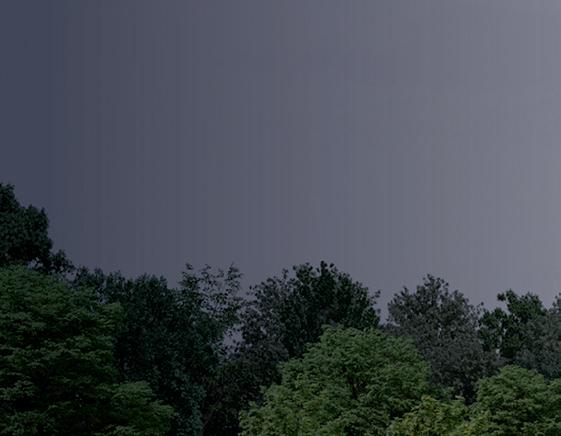
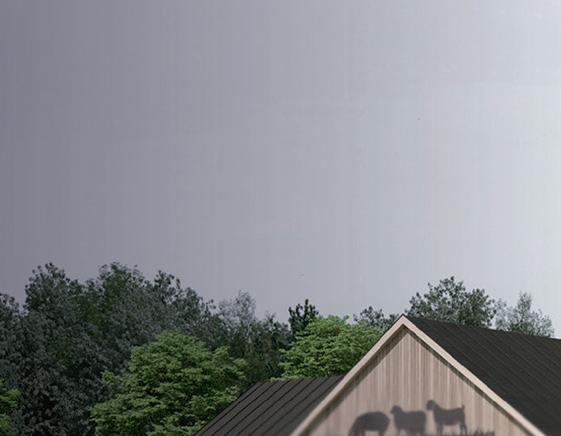

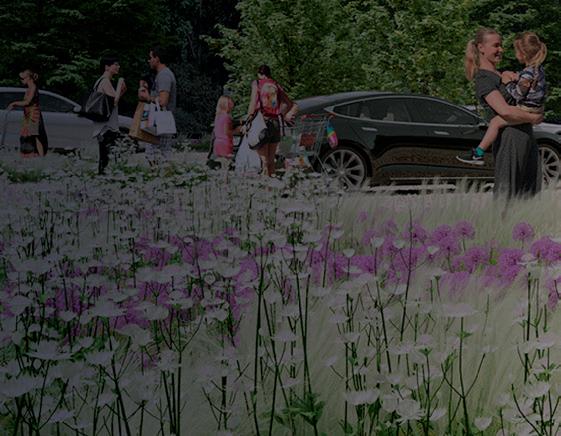


With demand for local, quality meat and traditional products made from wool and sheepskin, Alex Black takes a look at the different enterprises utilising the UK’s native breeds.
Native livestock breeds are particularly well-suited to a wide range of diversifica tions, from selling meat directly from farm to wool products and tourism.
And the Rare Breeds Survival Trust (RBST) is keen to explore the commercial opportunities of rare breed livestock, helping preserve the populations while boosting farmers’ incomes.
RBST chief executive Christopher Price said: “These breeds were specifically bred to thrive in our landscapes. Each of them has its own set of unique characteristics, helping create a breadth of opportunity, ranging from the tried and tested to exciting new ideas.
“There are great examples across the UK including rare breed farm tours, sheepskins, experience days, tasting events, charcuterie, breed
RED POLL CATTLEA HARDY, dual-purpose native breed, the Red Poll originates from an area with poor, light, sandy soils and cold winds from the North Sea. It thrives on low input management systems as it is an efficient converter of forage requiring little or no additional feed.

It is an easy calving docile cow and an excellent mother, and steers and young bulls finish well and produce outstanding quality meat.
Most Red Polls in the UK are used as suckler cows, although a small number of milking herds continue. They are not picky grazers and will readily browse trees and shrubs, making them ideal for conservation grazing public sites.
For conservation grazing sites with public access Red Polls are popular choice due to the absence of horns, their medium size and gentle temperament, and the visual appeal of their conker red coats.
ing stock, filming opportunities, conservation grazing contracts, street food vans, rare breed experi ence holiday accommodation.”
The public are becoming increasingly aware of the special place rare breeds play in the heritage of the UK, responsible consumerism and environmentalism.

This means there are growing opportunities to embark on suc cessful diversification activities alongside meat and dairy produc tion with rare breeds.
“With rare breeds, there can also be greater opportunities to find markets for the whole animal. The popular nose-to-tail pie made with Clifford Freeman’s Gloucester cat tle is a great example and there are also markets for selling the hides and horns,” Mr Price added.
National Sheep Association (NSA) chief executive Phil Stocker said he was seeing many of its members diversifying from main stream sheep activities, usually alongside their main business rath er than abandoning it.
And native breeds could also offer a chance to return livestock to the arable rotation, he said.
“Although sheep farming has a reputation for being conservative and traditional, there is no shortage of innovation and new ideas being put in place on Britain’s sheep farms.”
NSA has 83 sheep breed associa tions affiliated with it.
“Our breed diversity gives the opportunity for some farmers to
tap into specialist markets for wool, lamb, mutton and sheep dairy products, too.




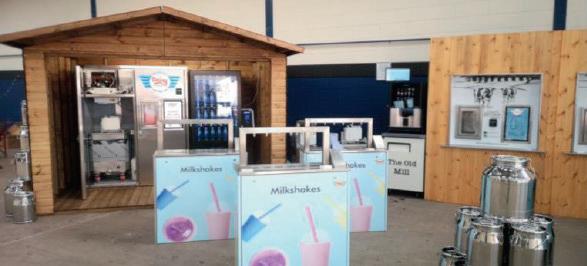
“This is one of the reasons NSA established British Heritage Sheep to act as an umbrella for the promotion of specialist products, such as hogget and mutton – great food with differentiation and a story.
“There are some inspiring examples of farmers benefiting from these market opportunities and selling via mail order or into specialist retailers and catering establishments – often alongside continuing with more mainstream sheep farming activities.
“At the other end of the spectrum, we have sheep farmers with specialist native breeds of sheep who are making a business out of grazing high value nature sites, and others using high performing sheep breeds to re-integrate livestock grazing back into arable rotations to build soil quality and break pest and weed life cycles.
“These sorts of opportunities exist right across the country and the trick is to identify the opportunities that work for the individual farmer and his or her interests.”
Building up a flock of native breed sheep has helped first generation farmers Lewis Steer and Flora Searson achieve their dreams of becoming farmers.
Keeping rare breeds has allowed them to build up a business with Greyface Dartmoor, Whiteface Dartmoor and Devon and Cornwall Longwool sheep on-farm.
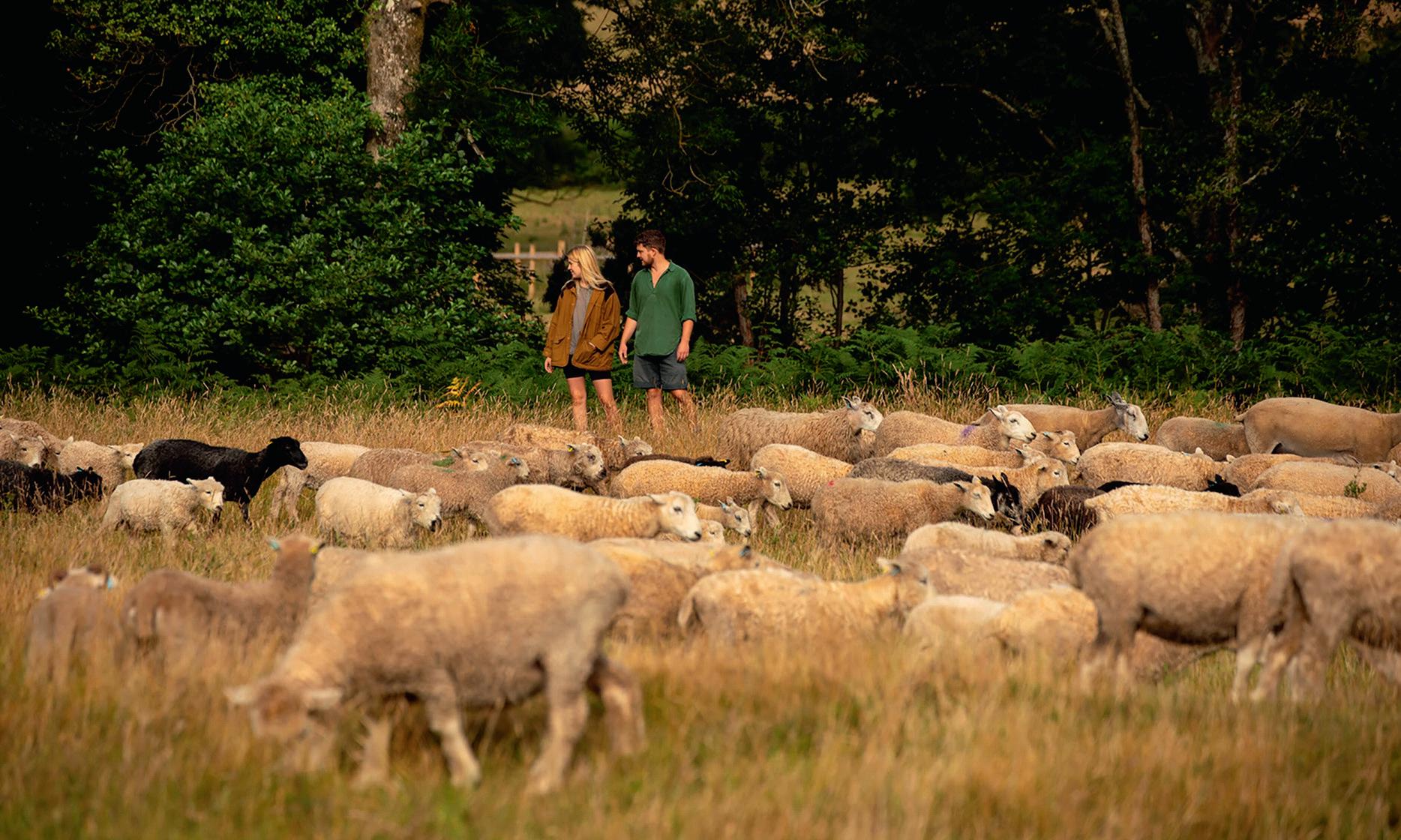
Coming from non-farming backgrounds, with Mr Steer’s parents greengrocers and Miss Searson’s working in education, Mr Steer thought it might be impossible to get into farming.
He says: “I had always wanted to be a farmer. But I was always under the impression that I could not really do it.
“My initial idea was that I needed to go away and make some money and then come back. Once you are bitten by the farming bug, you cannot really escape it.”
Starting out with a hobby flock, Mr Steer met Miss Searson at university and she had then got involved with the sheep.
“She got bitten by the farming bug too.”
In 2016, they started up with an idea to sell meat and The Dartmoor Shepherd company was born.
They were both working other jobs alongside building their business and were renting pieces of land ‘all over Devon’.
“We could be driving for an hour between blocks of land,” he says.
“A couple of years later we took our first secure tenancy. We needed to grow the business.”
The couple now farms about 101 hectares (250 acres), with 80 per cent under a secure tenancy.
Local breeds have helped first generation farmers establish themselves in the industry. Alex Black finds out more.
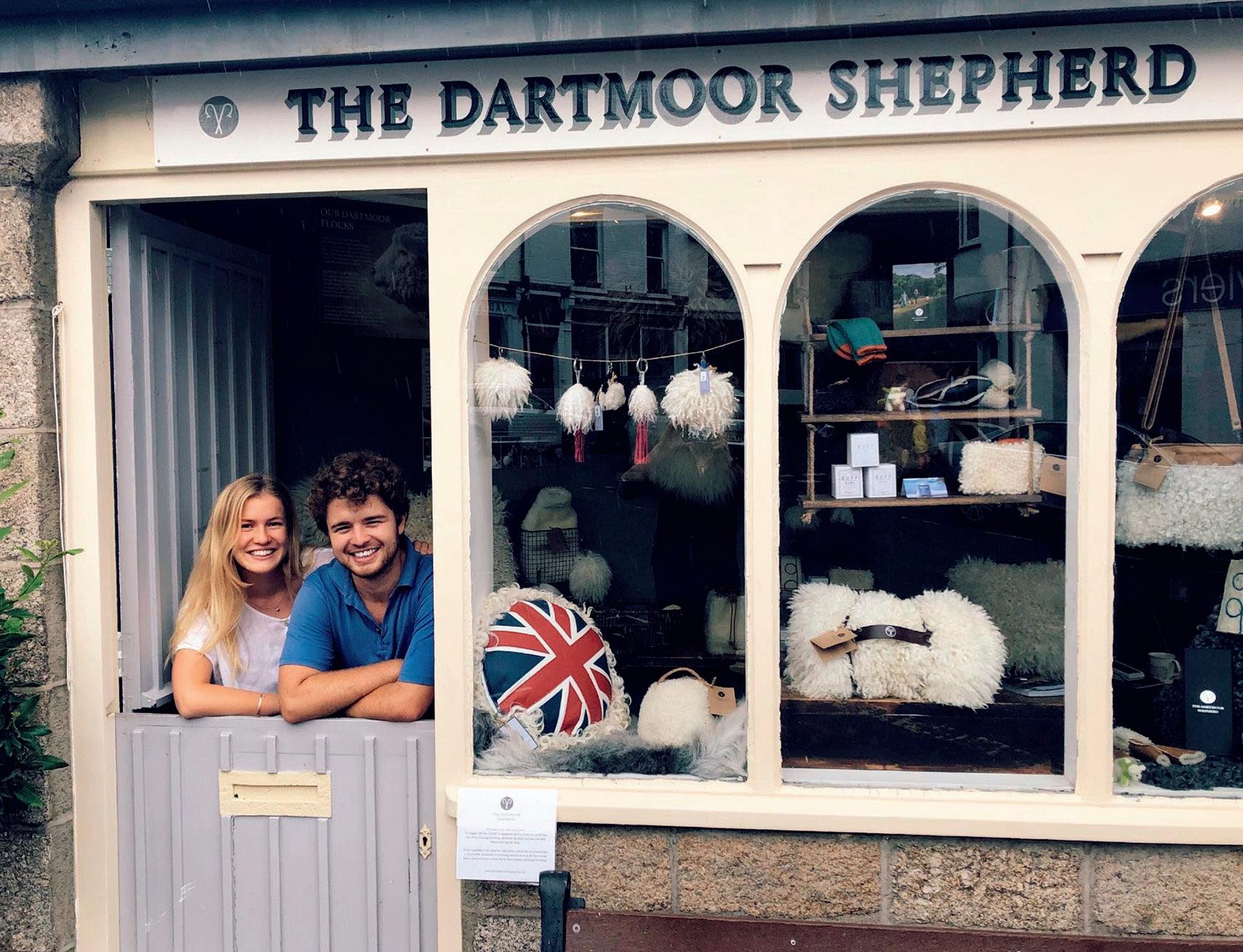
They initially started with meat boxes, selling hogget and mutton.
“It is quite a flooded marketplace, so we started to look at other ideas.”

Starting to produce sheepskin
rugs, they originally outsourced production, but as the business grew, quality control became more difficult and so they built a wool shed on-farm.
The couple now farms about 101 hectares (250 acres), with 80 per cent under a secure tenancy.
“We now employ two ladies to do the stitching.”
Initially, the business was selling products online and the couple attended about 12-15 events.
“As we have grown it has moved to about six or eight events, but they are much bigger. It has grown a lot.”
They also now have a shop for their sheepskin products and still produce hogget and mutton, including selling to two restaurants.
Mr Steer says there is good demand for their products, with origin very important to their customers.
“As farmers that is something we are able to offer,” he says.

“People know by buying this product they are using their money as a tool to show support to new entrants in an environmentally sensitive way.”
He adds marketing is very important and Miss Searson has done a fantastic job on that side.
Mr Steer says initially the choice of sheep breeds was not a business decision.
“We realised it makes sense. They
are bred to thrive off this landscape. We were told by a lot of people in the farming industry that they were rare for a reason.
“They are smaller, they tend to have one lamb and are very slow growing. For us, that works.


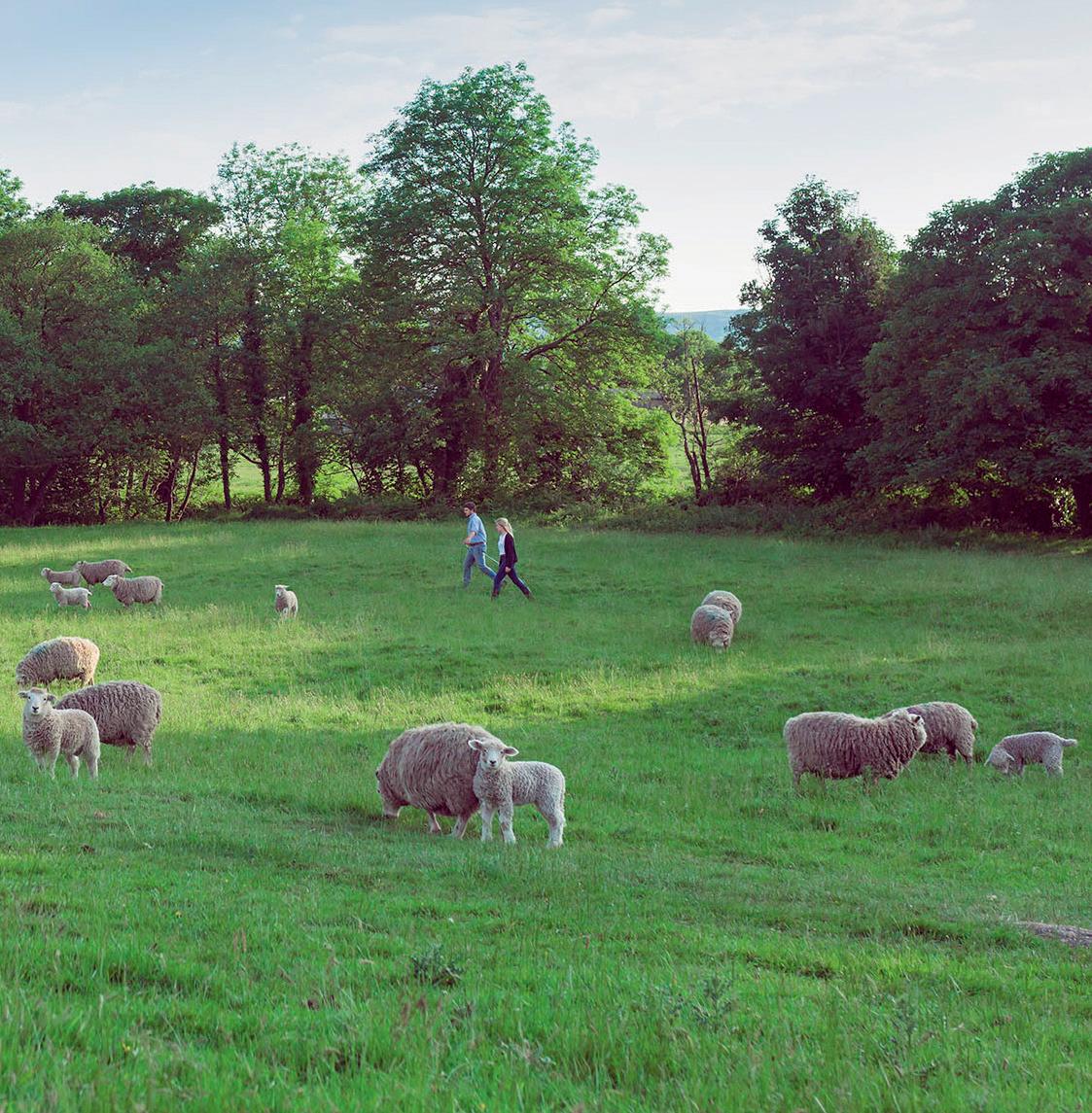
“They do not suit commercial systems. But for us we are looking at it from a different point of view wanting to have minimal impact on the landscape. Everything is done outdoors.”

Looking to the future, Mr Steer says they will be going forward ‘by looking to the past’.
“Many see it as a decision between the environment and production. But if you use the right breeds and farm in a more regenerative way, you can do both.”
And they are looking to expand beyond the sheep, with two Tamworth pigs already on-farm.

“We just have sheep at the moment. We are trying to embrace a regenerative approach. We are a sustainable farming incentive pilot farm,” he says.
“We would like to introduce other animals to the mix.”
Mr Steer adds they have students working on-farm who have brought new ideas, including using the pigs to clear bracken.
They are also looking at potentially introducing cattle on a very smallscale as tools to aid land management.
DESCENDED from breeds which grazed the low ground around Dartmoor, this longwool breed is also known as the Improved Dartmoor. Sturdy, quiet and easily handled, as one Devonshire keeper puts it: “If you want a sheep that you do not want to be forever chasing around your pasture, then these are the sheep for you.”
The Greyface Dartmoor has a long, lustrous fleece and a white face with distinctive black or grey speckling around the nose.
The breed produces a heavy, versatile fleece well suited for use in carpet and other hard-wearing woollen products. It is also a popular meat breed – it is said that after September you can taste the moorland sweetness in the meat.
It is categorised as an At Risk breed on the Rare Breeds Survival Trust Watchlist.

THIS rare longwool breed is easy to care for – hardy, quiet and content to stay within a field boundary.
Shorter than other longwools, it has a bulkier build, a dense and curly fleece and white ears with black spots.
With so much wool that lambs can be sheared, they are said to produce more wool per sheep than any other British breed. The fleece is very hard
wearing and attractive to spinners for weaving rugs. It can also be used for doll’s hair, needle felting and creating home furnishings.
A lean breed with little fat, its meat is tender and tasty. Crossing with a Dorset Horn produces a ewe which will lamb out of season.
The breed is categorised as At Risk on the Rare Breeds Survival Trust Watchlist.
TAKES PLACE AT THE NEC ON NOVEMBER 2-3

THE Whiteface Dartmoor is a medium-sized hill breed with a thick fleece which is long, lustrous and tightly curled. The rams have magnificent spiralled horns. Exceptionally hardy, it can survive on exposed uplands with little need for supplementary feeding.
Like its Greyface cousin, the Whiteface Dartmoor is a descendant of the Dartmoor heath sheep of the 17th and 18th centuries. It is sometimes known as the Widecombe Whiteface as most of the breed is still concentrated on Dartmoor.
The breed is categorised as At Risk on the Rare Breeds Survival Trust Watchlist.
Whiteface Dartmoor meat has been called angel meat because of its taste, it produces good wool and its sheepskin rugs with a distinctive curl are particularly popular.
People know by buying this product they are using their money as a tool to show support to new entrants in an environmentally sensitive wayThe different sheep breeds on-farm are slow growing, which works for the couple. Production for the business’ sheepskin products has been brought in-house. PICTURE: NIC VICKERY (BUTTLE FARM)
Starting out looking to produce food just for themselves, Helen and Andy Dale of the Good Life Meat Company now produce rare breed meat and charcuterie from their own livestock.
They had originally been searching for something which tasted better than they could buy in the supermarkets.
Mrs Dale says: “We bought a few pigs for ourselves, then got a bit more land so got some sheep. Then got a bit more land, so got more sheep.
“We were looking for a low input system so we started looking at rare breeds. It just seemed to fit the bill for us with the quality of the product and the slow method of production.

“There was an emotional driver with getting the Tamworth pigs. We are based in Staffordshire. It seemed to fit,” she says, adding they tried other breeds but the Tamworth pigs suited their system perfectly.
“They were very low maintenance for us.”
Alongside the pigs, they keep a few different breeds of sheep, including Shropshire and Castlemilk Moorit.
“We do not sell any lamb. We are not trying to grow them as quickly as possible. We sell hogget and
mutton. It is a very different flavour,” she says.
“We wanted it to pay its own way and produce a product which differentiated us, hence the rare breeds.”
They sell directly to the public, offering a connection to the farming system and cutting out any middlemen.
“The people who buy from us are looking for something different,” she says.
“Customers are interested in the breeds once they know about them, but it is not their key driver.
“Instead, it is the farming system. They can feel confident in what they are buying.

“When we attend farmers markets we go ourselves, we do not send anyone in our place, so there is a direct connection to us as farmers. We also use social media a lot to communicate with our customers.”
Mrs Dale believes the quality and
flavour of rare breeds cannot be beaten.
“All farms are different. It all depends on what system you have and what you want to produce. All farms are different.”
Mrs Dale says they went into charcuterie to try and maximise the value they get from the carcase.
“We need to make as much value from the carcase as we possibly can by selling those less appealing cuts of meat. You cannot just sell steaks.
“It is one of the reasons we went into charcuterie, so you can use some of that meat in there.”
THE Tamworth is considered the closest living relative of the old English forest pig. They have large pricked ears, a straight, tasselled tail and a distinctive golden-red coat which keeps them warm in winter and protects from sunburn in the summer.
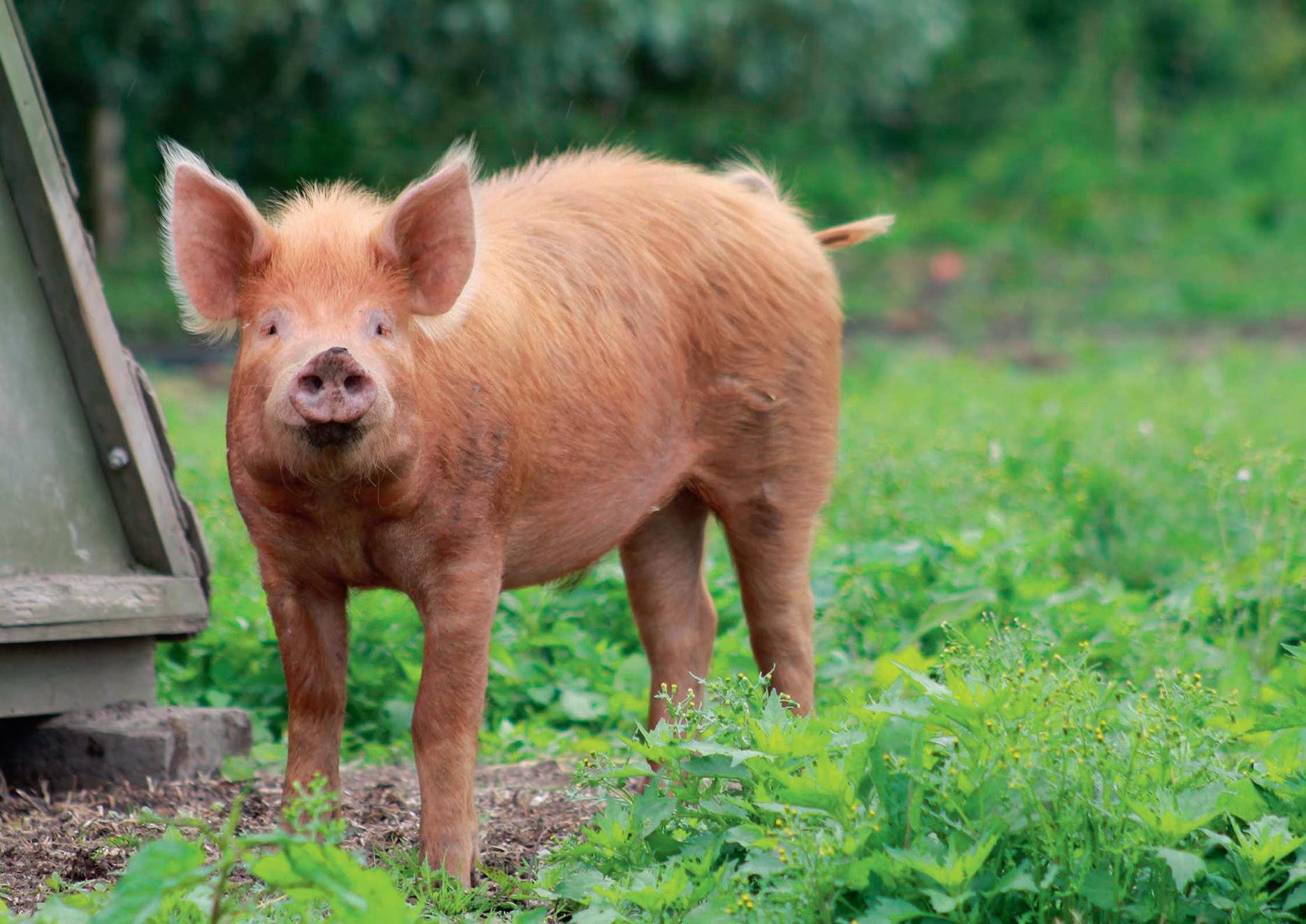
With faster-growing breeds favoured following the second world war, reportedly fewer than 20 boars were left in the UK in the 1970s. A small number of dedicated breeders saved the Tamworth from extinction, but numbers have remained low and the breed is categorised as a Priority breed on the Rare
Breeds Survival Trust’s Watchlist. Hardy and resilient, Tamworth pigs are ideally suited to living outdoors all year round. They love foraging and rooting with their long snouts, making them a useful conservation asset for ground clearance and managing woodland. They are friendly, good mothers and easy to look after but they do have a good jump.
The Tamworth is a dual-purpose pig, good for producing excellent pork as well as high quality, tasty bacon and charcuterie products.
Long-legged and lean, sows weigh about 260kg and boars around 320kg.
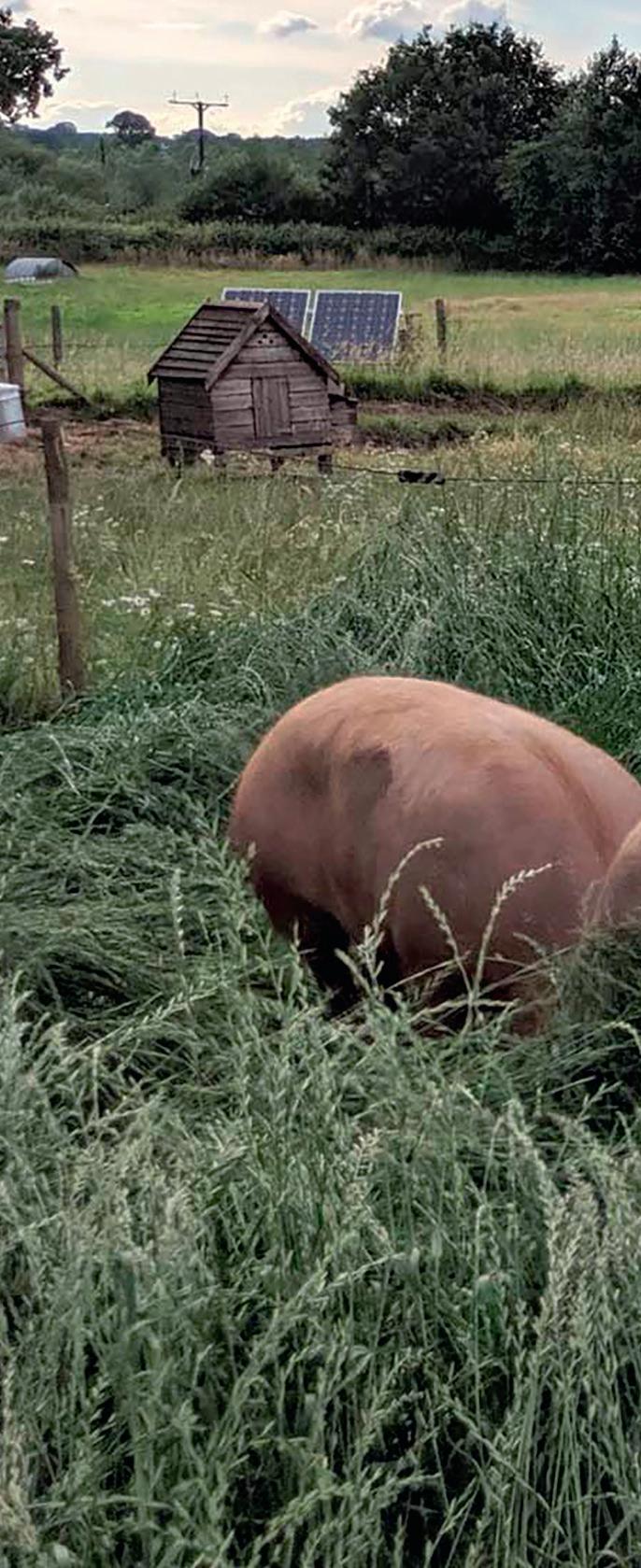
We are not trying to grow them as quickly as possible. We sell hogget and mutton. It is a very different flavourHelen Dale says the Tamworth pig fits perfectly with their farming system.

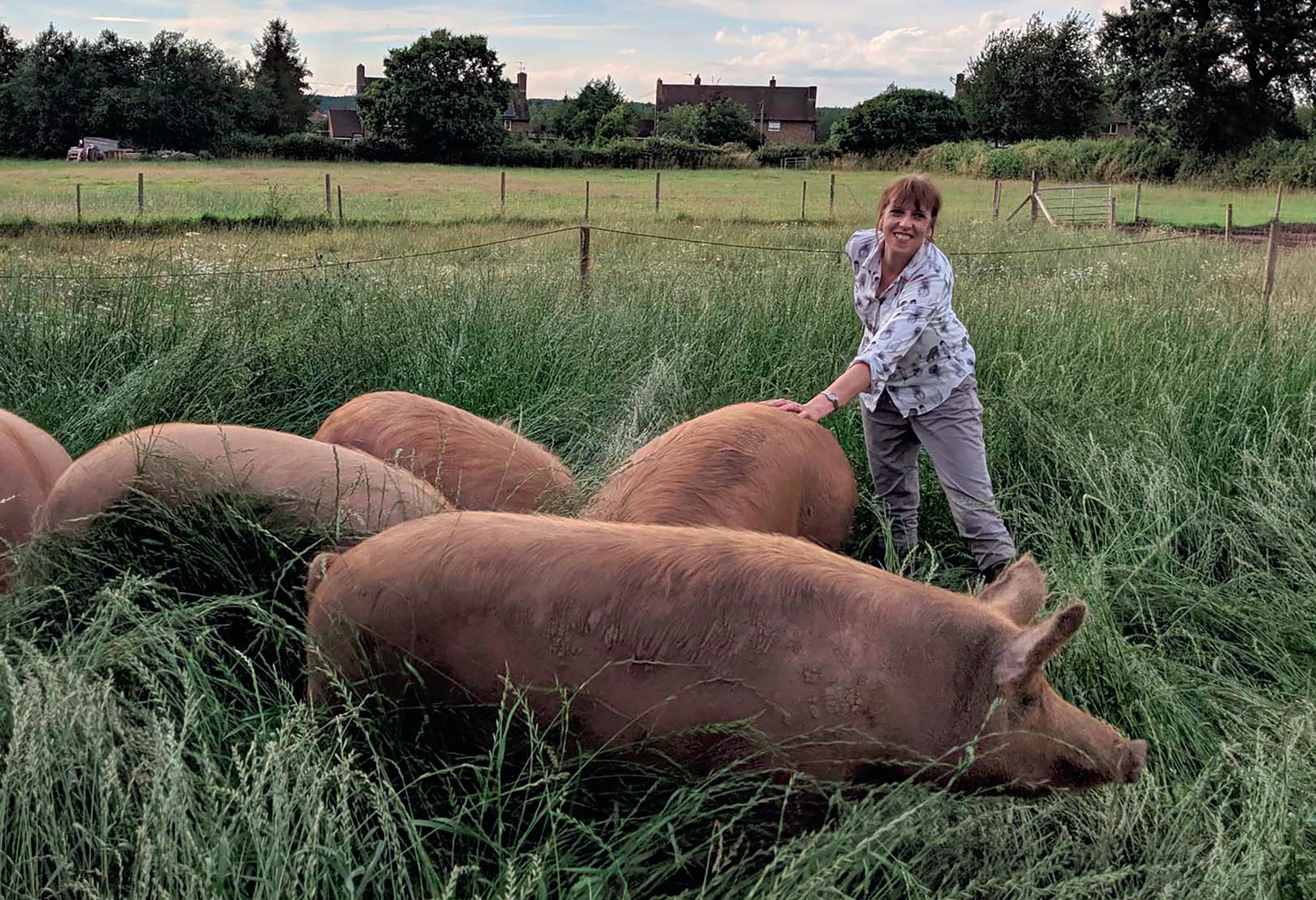
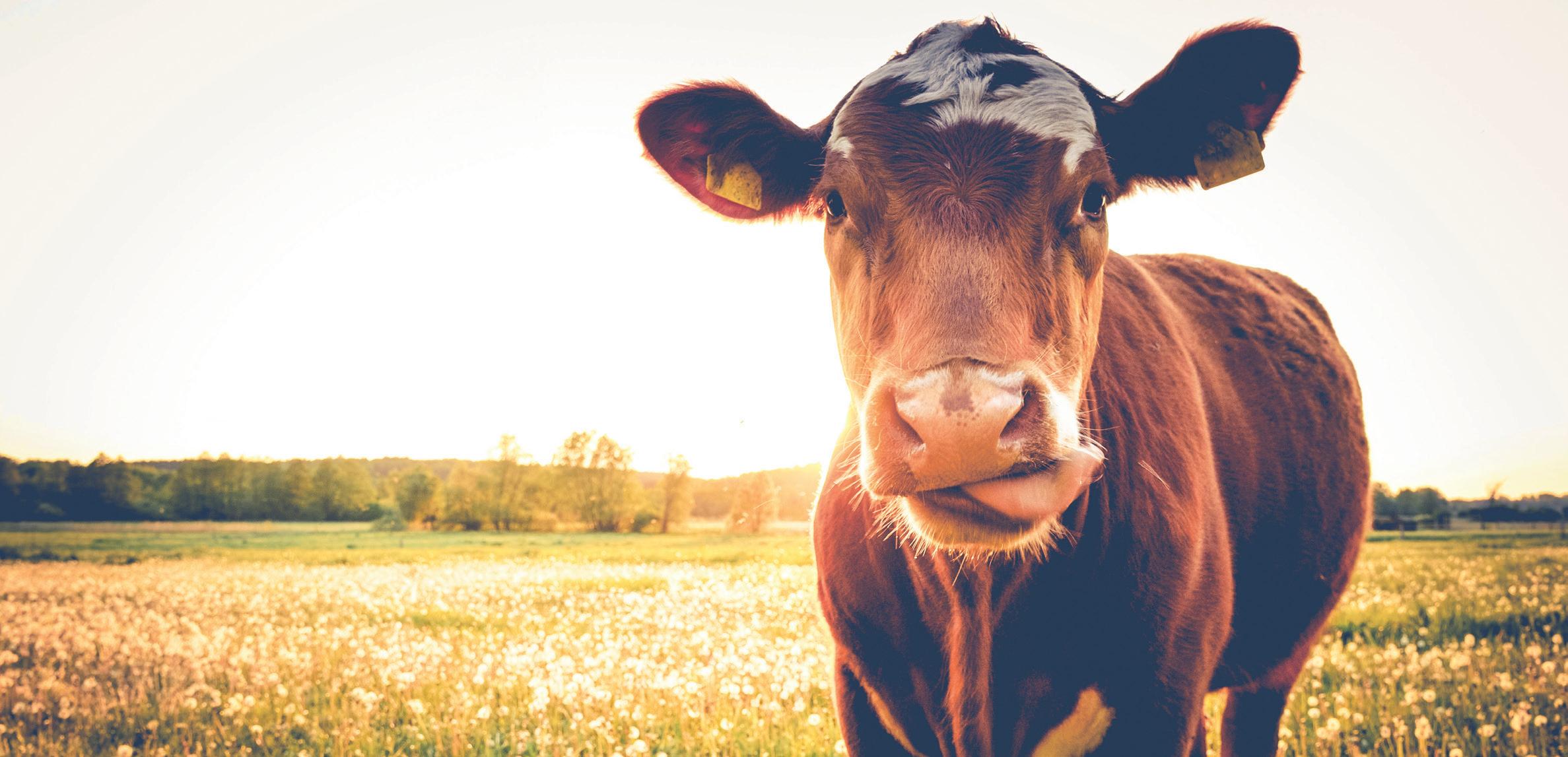
Looking to keep farming as farms around them got bigger, arable farmers Ben and Georgina Butchery helps Suffolk farmers
Running a small predominantly arable farm in Suffolk, Ben and Georgina Woolf realised with farms around them expanding they needed to better
The couple has about 20 sows with followers in a farrowing to finishing unit.

utilise their holdings to keep farming.
Looking to make the business viable, they turned to rare breed livestock and setting up their own butchery.
“We have always had cattle and a few pigs. It was more of a hobby to start with,” Mr Woolf says.
“Being a smaller sized arable farm in East Anglia was getting uneconomic. We still have a little bit
of arable land, but most goes into the livestock rations.”


The farm has 50 breeding cows, which are predominantly Red Polls. The females are pure-bred Red Polls.
THE distinctive Gloucestershire Old Spot is a hardy breed able to cope with most conditions. The breed originated on the southern shore of the River Severn and was frequently kept in orchards.
The pigs are excellent foragers, good mothers and have a very gentle nature. They are broad, deep bodied pigs, with sows weighing about 280kg and boars about 350kg.
It is an ideal breed for small scale production, but it can also serve a more commercial audience in non-intensive conditions.

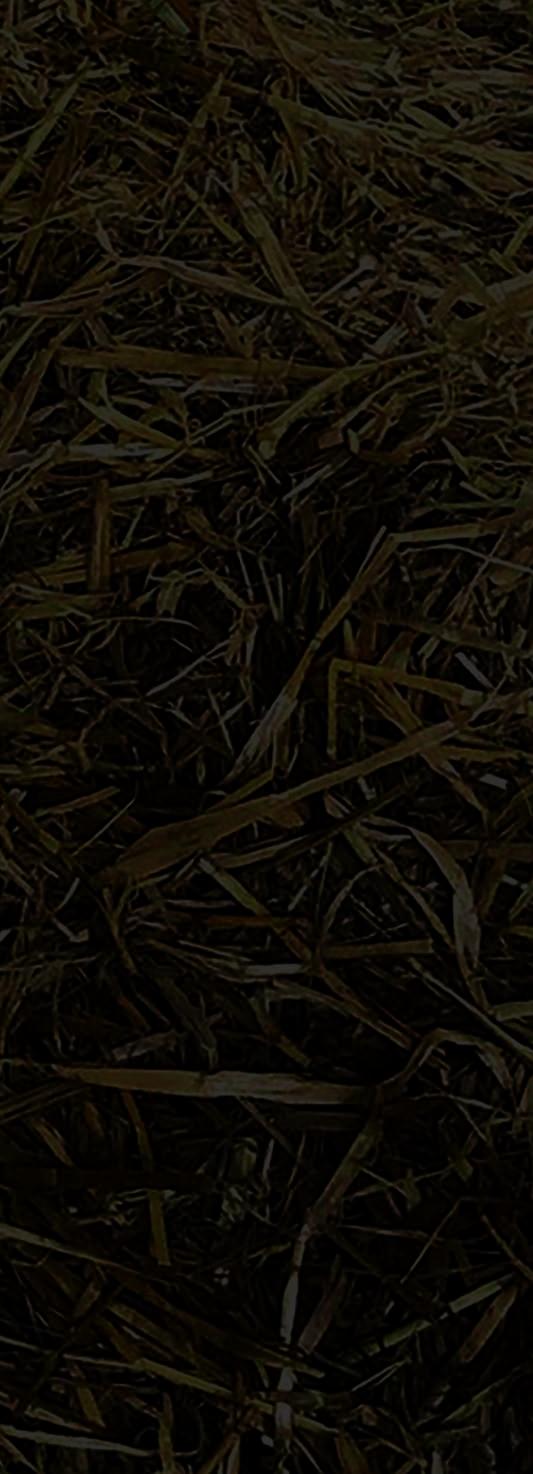

The Gloucestershire Old Spot is a dual-purpose breed suitable for pork or bacon production, with a reputation for high quality meat.
It was the first breed of any species in the world to be accorded Traditional Speciality Guaranteed status by the EU Commission in recognition of the special qualities of its meat.
The succulent and tasty produce has helped the breed’s numbers grow, but the Gloucestershire Old Spot remains in the At Risk category on the Rare Breeds Survival Trust Watchlist.
Some of these are crossed with Shorthorns to achieve the desired specifications for the butchery, with the farm deciding to add some pure Shorthorn females to the herd.
For pigs, the couple has about 20 sows with followers in a farrowing to finishing unit, although they do sell some as weaners.
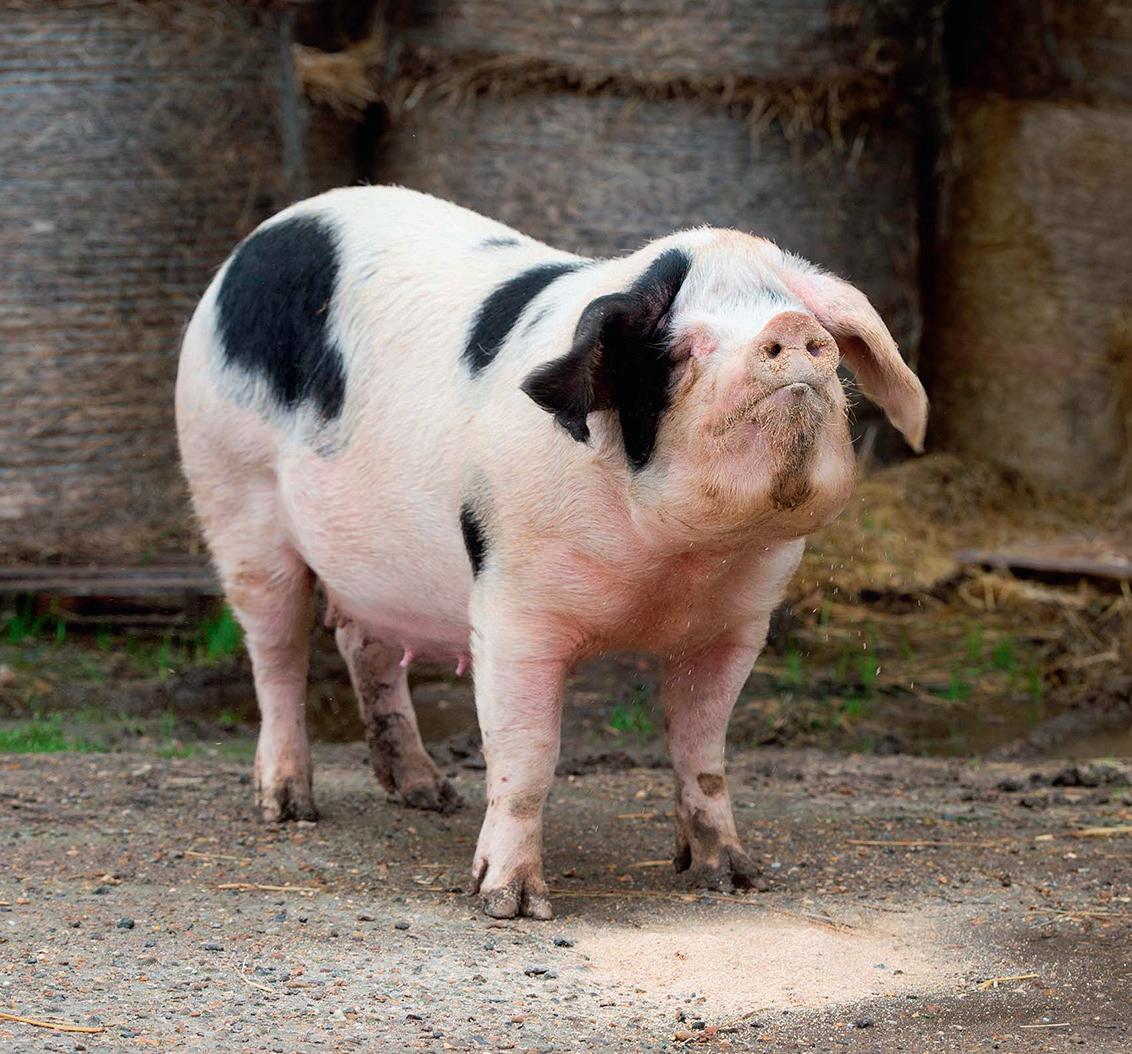
Mrs Woolf says: “We started with two pigs and they were Gloucester Old Spots. We chose them because we quite liked the spotty pigs.
“They do produce a really good tasting piece of meat. We did the right thing, although it was a bit of an accident.”
She says they then needed something ‘a little bit less fatty’ and decided on the Large White.
“It looks a bit more like those supermarket cuts you get but with a great taste too,” she says.
“It also helps to conserve the breed.”
To make the farm sustainable, the couple decided to sell directly to the public.
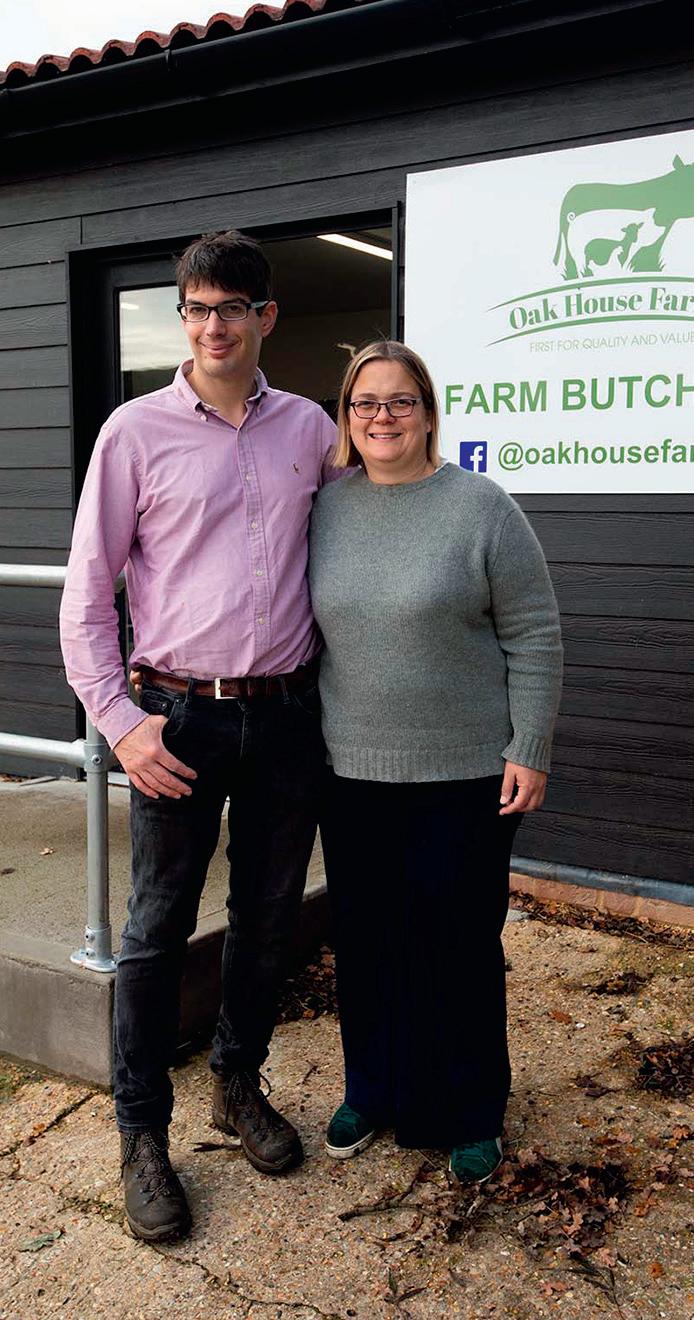

Mr Woolf says: “We spent a lot of time asking how do we get into the premium market.
“We decided to be in control of the whole supply chain. We felt that in the longer term there were better opportunities to scale. If you grow your own you are in charge of your own destiny. We felt it was the best way to secure that premium.”
BEN WOOLFMrs Woolf adds it also meant they were in control of the butchery so they could get a better range in store and have quality control as they could observe the butcher working.
While they have some older cus tomers who value the traditional cuts of meat, the meat is popular among younger people.
“They like to know where the meat is coming from, what medi cines it has been given and what it is eating,” she says.
“We get some very local people but there are some who travel quite a long way.”
Mr Woolf adds: “They are dis cerning. We are not on the High Street so they have to come and find us.”
They have also tried to take the middle ground on price, which means they have a large range of people visiting the store.
“Everyone can come in and can afford something,” she says.
Mr Woolf emphasises the rare breeds are not for everyone and farmers need to enjoy raising them.
“They are a bit different,” he says.
They also urge farmers to do their research on the market and know where their product will end up.
There are resources out there for farmers who are looking to get started with rare breeds, with many of the breed societies able to sign post to other producers to speak to who are familiar with the breed.
However, they have also found advice in places where people may not expect it.
“Around here there are some
really knowledgeable people in the meat supply trade. The people are there but you probably have to seek them out.”
Mrs Woolf adds: “The local slaughterhouse has given us a lot of advice.”
Rural diversification can be both agricultural and non-agricultural and rewarding on many levels.
There are a variety of options and increasingly farm businesses are now multi-faceted providing the business with a variety of income streams.

Acorus has assisted many clients with several different forms of diversification projects from holiday accommodation, farm shops, restaurants/cafes, rural leisure pursuits, dog day care, event hosting, wedding venues, offices, the list goes on.
In most cases a diversification project will require planning consent whether by a full planning application or via permitted development rights. Any new venture will require careful consideration.
If you are considering a diversification project and would like to discuss your options and what the relevant planning implications may be, please contact us.
We are exhibiting at the Farm Business Innovation Show on the 2 & 3 November at the NEC, Birmingham – Visit us at Stand FM532.


Woolf looked to native pigs to ensure their business was viable.
We spent a lot of time asking how do we get into the premium market. We decided to be in control of the whole supply chainBen Woolf emphasises the rare breeds are not for everyone and farmers need to enjoy raising them. Ben and Georgina Woolf.
With attractions ranging from sheep racing to Devon’s biggest rollercoaster, Alex Black spoke to Rick Turner about how he has developed The Big Sheep over the past 34 years.
Providing entertainment not education is the key to success for farm attraction The Big Sheep, which first opened its doors back in 1988.

Rick Turner’s father was involved in the NFU and decided the farm needed to diversify to prepare.
Originally a sheep and chicken farm, the initial idea was to utilise a disused chicken barn and start milking sheep as a new enterprise and open to the public.
“We had a main highway going through the middle of the farm, that was the spur,” Mr Turner says.

“But we then realised we needed to do a lot more to attract the number of people in.”
The name was inspired by Australian theme parks, where Mr Turner spent time before returning to the family farm near Bideford, North Devon.
The idea was to create a sheepbased theme park, with anything sheep-related considered from shearing shows, to spinning wool and opening up the lambing barn for a lambing live.
“The key thing was to provide entertainment rather than education. People are not going to pay for education, but they will pay for entertainment,” he says.
They held sheepdog shows and shows with the ducks and chickens.
Having sheep running around on


the farm inspired the next venture for Mr Turner, with sheep racing starting in the 1990s.
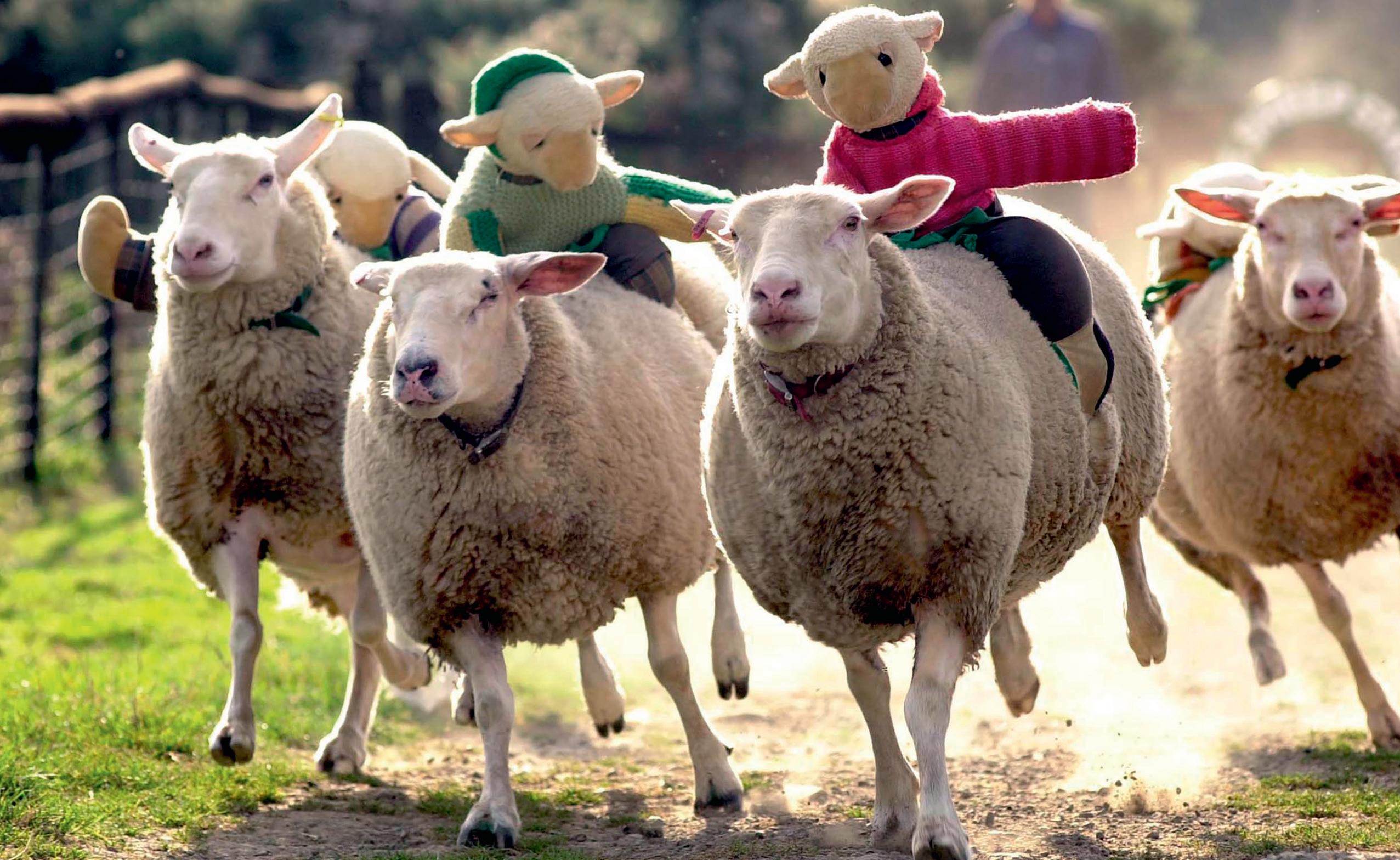
He adds: “If you would leave certain sheep in the top of the field and then rattle the bucket, they would come running. It got a lot of national and international coverage.”
Unfortunately, they took a ‘massive hit’ when foot-and-mouth hit.
“We were not able to do any of the sheep-related stuff. We were not able to milk the sheep in the whole of 2001,” he says.
The farming part of the business now mainly runs around creating entertainment rather than a commercial venture.
Lambing is now timed to coincide with school holidays, so there
are lambs on-farm for people to see. But the business is now diversifying away from the sheep.
With not many people living in
the local area, Mr Turner says it is important that they cater for the whole spectrum, from toddlers to teenagers to ‘granny and granddad’.
“A lot of farms will target the under sevens,” he adds.
“The sheep racing, the shearing shows and duck trials. A lot of those shows are aimed at the adults.”

While it has become a sheepbased theme park, they are now moving into more projects away from the sheep.
On top of the outdoor activities, they have an indoor play area allowing them to attract in people no matter the weather.
The farm park is also home to Devon’s biggest rollercoaster.

“That cost a couple of million to
put in in 2015. We have a few other rides. We have swan pedalos which go around the lake,” he says.
“We produce our own gin. We do have an eclectic mix.”
They also hold live music events at the farm and have launched their first festival aimed at toddlers this year.
Initially, Mr Turner wondered how the idea would go down, but it was a huge success.
“We had two live stages running with pre-school activities,” he says.
There are also restaurants and retail outlets on-site.
Themed events for Easter, Halloween and Christmas are also popular attractions.
“It is incredibly different to how it was in 1988. There is very little farming going on, at least not for commercial reasons.
“It is light years away from where we diversified to start off with.”
The farm has a flock of 300 commercial Mules, but has also diversified into Pygmy goats.
“For me as an eighth-generation farmer, it is a showcase for British farming but we try and do it in an entertaining way. We are bringing people to the farm.”
He adds there are always challenges.
stand still. We are in a very competitive environment. There are other very good attractions around.”
He says you always have to be open to new ideas and make sure you do not have a fixed mindset.
They are also investing in renewables and other eco-friendly projects, including installing solar panels on the roof.
“Electric costs have gone from £3,000 a month to £12,500 a month,” he says.
He warns farmers starting out on diversification projects it can be like a ‘treadmill’, with new ideas taking the business in unexpected directions.
“Sometimes I do wish I was just with a dog rounding up the sheep, but it provides a very nice lifestyle,” he says.
He adds one of the most important things is to be good at your diversification.
“You have to make sure that you enjoy it,” he says.
“If you are not careful you stop
doing the farming and rely on income from other areas. But there are opportunities within farming as well.”
Employing, retaining and motivating staff is a vital part of running a diversified business.
Mr Turner says since Covid-19, there has been a mindset shift with more people valuing the work-life balance.
“People do not want to work weekends,” he says.
“There is not much loyalty. On the scale of the most important things to their life the job is probably fifth or sixth on the list.”
About 60 people are employed on the farm.
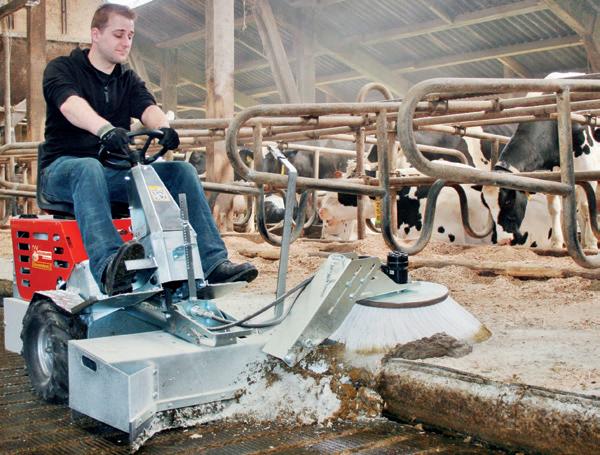
“We are a good employer. I love my team, they are brilliant people to staff.

“With using a lot of seasonal staff you have to make sure they are part of a team rather than your employees who you tell what to do.”
RICK TURNER“But farmers are incredibly imaginative and creative. You cannot

The proven range of specialist machinery makes routine farm cleaning tasks easier, quicker and more cost effective.
Sometimes I do wish I was just with a dog rounding up the sheep, but it provides a very nice lifestyleThe farm park is home to Devon’s biggest rollercoaster. Lambing is timed to coincide with school holidays.
Taking a practical approach when considering a new diversification will help farmers get into the right project in order to reap the benefits.
According to a Defra report, 68 per cent of farms have now undertaken some form of diversification.
Bidwells associate Louise Newton said: “Diversification is becom-
ONE of the first things to consider is whether a potential diversification project will fit alongside the current farming activities.
“For example, a holiday cottage probably will not be very popular if it is next to the slurry pit or grain drier and, equally, you do not want members of the public wandering through a busy farmyard,” Ms Newton said.

“You need to make sure that introducing any new uses to the farm will not result in a conflict of site users or impact on the operation of the agricultural business.”
CLA senior economist Charles Trotman suggested preparing a
MOST diversification projects will require some form of planning permission, so it is hugely important to assess whether consent is likely to be achievable before getting too carried away with the project.
Ms Newton recommended seeking professional advice to assess what permissions are needed and if the proposal meets planning policy requirements.
Mr Trotman said farmers should look at national, regional and local planning policies and consider the planning history of property and any specific designations or protection.
He suggested farmers contact the local planning authority to arrange a site visit and discuss the proposal.
Mr Trotman added rough sketches were useful. It is also beneficial to meet the conservation officer if relevant and amend proposals to address any concerns raised.
Contacting the local community to obtain support was also important.
Farmers then needed to prepare and submit their proposal, completing all necessary forms such as a design and access statement and listed building consent.
ing increasingly necessary and can provide a great way to boost farm incomes, create employment and add value to the farm.
“If the scheme seems to be viable, then now is a great time to embark on a diversification project, but make sure you make a proper assessment at the early stages, seeking professional advice where appropriate.”
list of assets and their ownership status.
“Buildings, land, special features, location and skills should all be included. Which items do you own, which do you rent,” he said, adding farmers needed to consider their business structure and any tenancy issues.
Mr Trotman also advised drafting a business plan.
The chosen project should suit the farmer, the assets and relevant planning policies, he said.
“Carry out market research and prepare a business plan, including a cashflow budget. Make sure that the business plan is flexible and can be adapted to changing circumstances.”
“Prepare drawings, check fees. Consider including a farm development programme which provides useful background information,” he said.
“Obtain the reference number for your application. You can use this to track progress – some authorities now have an online facility for this purpose.”
He added that, if successful, farmers needed to consider any conditions, further enquiries and other regulations.
“If successful, do any conditions attached to the permission cause a problem and are there any other regulations or licences required?
“If unsuccessful, find out why and consider whether it is worth appealing.”
Diversification can provide a great way to boost farm incomes, create employment and add value to the farm.
DIVERSIFICATION is only beneficial if it helps to boost farm income, Ms Newton said. “Certain schemes will work really well in one part of the country, but not somewhere else,” she said.
“Market research is really important as it ensures there will be sufficient demand for
the proposal before making the investment. Again, this is something you can seek specialist advice on.”
MANY diversification schemes will require a lot of time and input to establish and manage.
CHARLES TROTMANIF considering office or business lets, access to high-speed broadband and other services will be hugely influential in finding tenants.
Ms Newton said: “You need to make sure this is something you have the time and expertise to run in-house, or otherwise find an appropriate tenant, operator or property manager to assist, although this will impact on income.”
If unsuccessful, find out why and consider whether it is worth appealing



IT is important to seek tax advice as taking land or buildings out of agricultural use can impact on future inheritance tax liabilities, or could trigger a capital


gains tax payment upon a sale. Building conversions could also trigger business rates and council tax, which you would be liable for during vacant periods.
DIVERSIFICATION will almost always require initial investment.
Farmers were advised to understand the costs and likely return on your investment at the project’s early stages.



“Increasing prices in building
IF introducing new uses to your farm, there may be increased insurance requirements. This is particularly relevant if members of the public will be accessing the farm.


materials and labour will have an impact on the viability of a project,” Ms Newton added.
“There may be opportunity to offset some costs onto incoming tenants, or enter into a joint venture. Borrowing may also be required.”
ASK whether a new, separate business would be appropriate.
Mr Trotman said: “Consider business rates, insurance, utility services, VAT, funding, health and safety, training and the effect on existing business.”

Covid-19 and the halting of international travel pushed ‘staycations’ into the limelight with the British public falling back in love with the British countryside.
And while people can now return to foreign destinations, the British holiday to the countryside seems to be here to stay.
There is a wide range of options for farmers and landowners

looking to tap into the market, with people looking for everything from a trip into the wilderness to a luxurious stay in a picturesque location.
Glamping, or glamourous camping, is one area which has really risen in popularity in recent years, with glamping pods popping up across the country. But a wooden pod was not the only option, with people staying the night in everything from shepherds huts and teepees to helicopters and aeroplanes.
CAMPSITES offer farmers and landowners the quickest easiest and most accessible form of diversification possible, according to Dan Yates, founder of Pitchup.
For the most basic sites, all that is needed is a spare piece of land, running water and toilet facilities, although operators may look at installing more facilities to attract a wider range of people.
There were three options available when setting up a campsite, he said.
“They could either run one under Permitted Development Rights
[PDR] or join an exempt organisation, both of which negate the need to apply for extra planning permission, but place certain restrictions on operating a campsite,” he said.
“The third option is to apply for planning permission for a permanent camping or caravan site, which requires greater investment, but can lead to greater returns.”
During the Covid-19 lockdowns, PDR was extended to allow sites to run for 56 days.
PROVIDING sites for touring caravans and motorhomes provides a ‘halfway house’ between tents and glamping, Mr Yates said.
“Like glamping, a caravan site does require an investment in infrastructure, such as electricity points and a place to empty facilities, but the

main cost – the accommodation –is avoided,” he said.
There are also other advantages over tent pitches.
“Camping is more popular among younger people, whereas the average age of a Caravan Club member in the UK is 55. Caravan and motorhome owners tend also to be more affluent,” he said.
However, despite it returning to its post-Covid-19 timescale of 28 days, many farmers have continued to capitalise on the popularity of the staycation.
“Some of those who opened for the full 56 days last year saw fantastic returns and decided to apply for planning permission,” Mr Yates said.
“The extra pitch capacity this has created, along with the heatwave and the British public’s desire to escape to some of the country’s most beautiful areas, meant 2022 was a record breaking year for Pitchup.com.”
“Caravanners are also less dependent on the weather. Whereas camping generally happens over a weekend, caravaners will often stay for a week or more, meaning pitches are occupied for longer and the

A caravan site does require an investment in infrastructure.
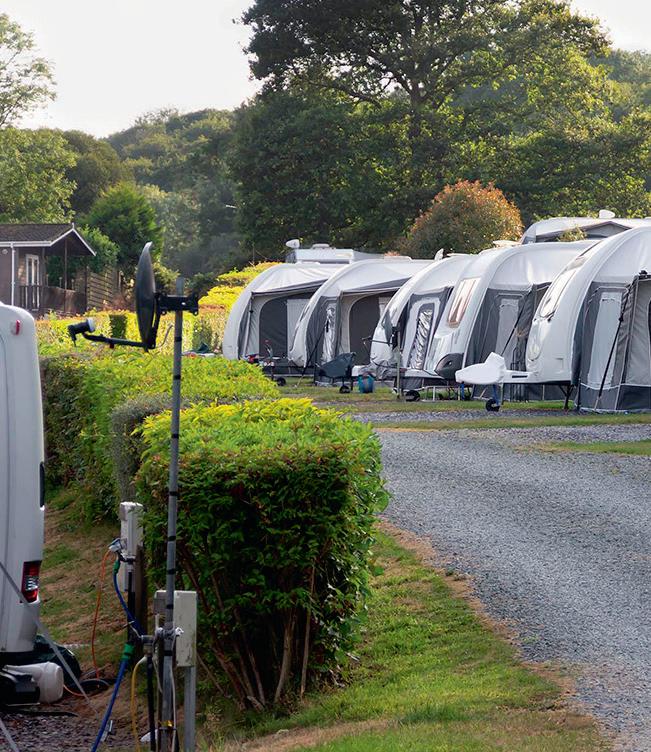
Campsites offer farmers and landowners the quickest, easiest and most accessible form of diversification.
season tends to be longer too.”
The Camping and Caravanning Club holds exemptions to the site licencing requirements of the 1936 Public Health Act and 1960 Caravan Sites and Control of Development Act.

This means the club can set up small private campsites without planning permission. Certified Sites will be able to accept up to five caravans or motorhomes and 10 tents for up to 28 consecutive days at any one time.

As a minimum, the club requires
these sites to have a fresh drinking water tap, a sealed chemical disposal tank, a rinsing water tap with a non-return valve and dry waste disposal.
Public liability insurance is also required.
Campers staying on Certified Sites must be club members, but sites get commission for signing up new members.
Damien Field, exempted camping manager at The Camping and Caravanning Club, said it could take as little as six months from getting in touch to welcoming campers onto site.
“Thousands of Club members book and stay at more than 1,200 Certificated Sites across the UK each year, campers who enjoy getting out in the great outdoors and understand how these small sites operate.
“Landowners who set up a site with us have access to our large customer base from day one and what is more, they can be reassured that they will welcome guests who understand and respect their campsite setup.”

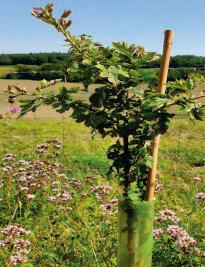


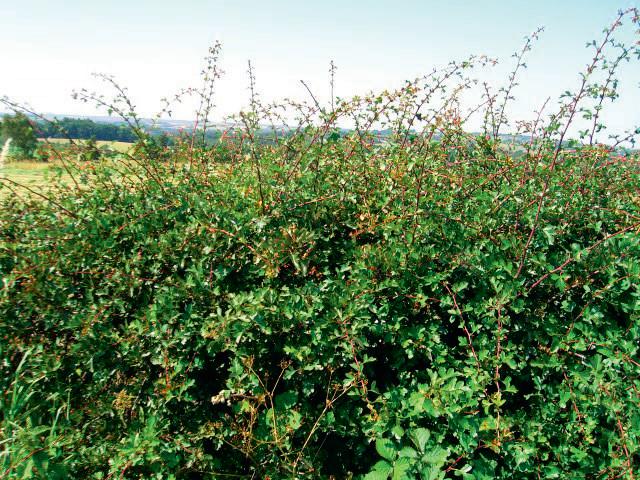

For those looking for something a little more luxurious than a tent but wanting access to the great outdoors, glamping offers an attractive alternative.
Dan Yates, founder of Pitchup. com, an online platform and booking system for campsite and caravan holidays (see p20-21 to find out more) , said: “Glamping offers a strong opportunity for farmers and landowners to diversify into the burgeoning agritourism market.”
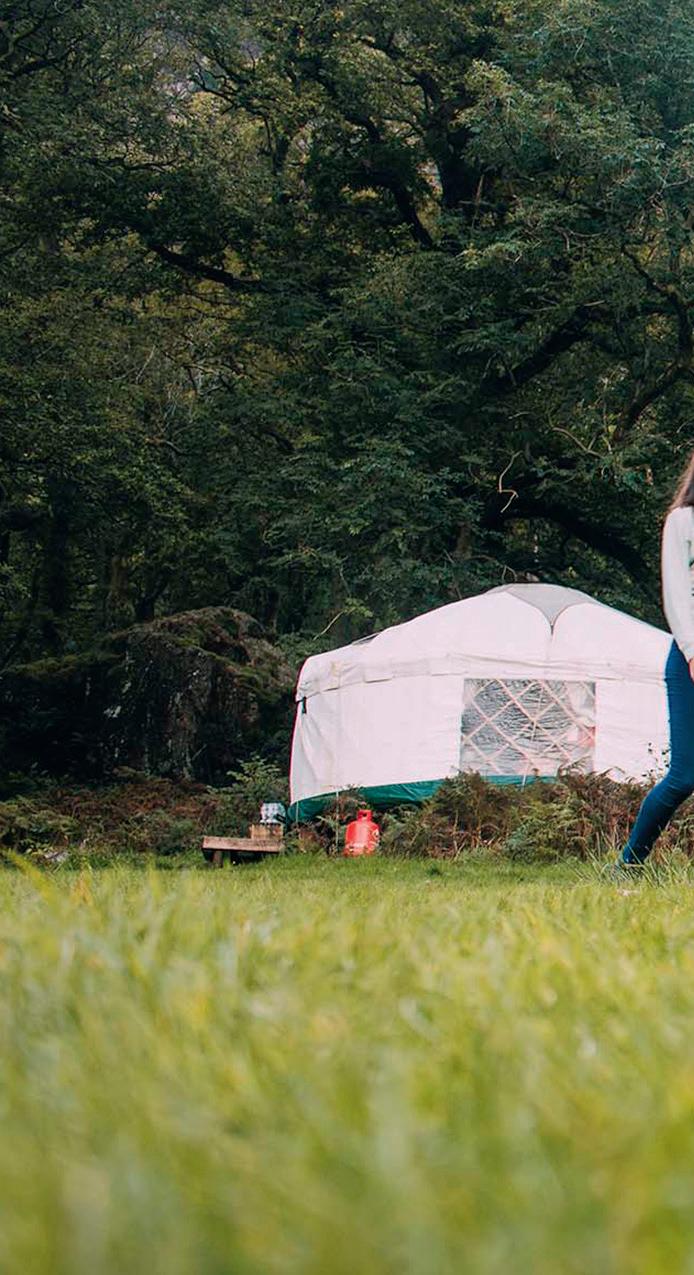
Glamping searches were up by more than 12 per cent since the pandemic, according to Google Trends.
However, for farmers and landowners looking to diversify into agritourism, there was a higher upfront investment needed, although higher prices could be achieved.
“Much of the accommodation used in glamping, such as shepherds huts, teepees and pods, represent significant expenditure and, although site operators can charge higher prices than for tent pitches, achieving a return may take longer,” he said.
“This is the same with infrastruc-
CREATING experiences was the key to a successful glamping enterprise, according to Safari Tents company director Mark Scott.
“You get return customers because of the experience,” he said. He gave the example of a family in a smaller glamping pod or tent,
ture. Holidaymakers looking to pay more for their staycation experience expect more – pleasant, hot showers, WiFi, perhaps even outdoor cooking facilities or hot tubs – all of which comes at a cost.”
Many farmers start with a small campsite run under permitted development rights (PDR), deciding to invest further into glamping facilities when it proves profitable.
who were limited to what they could do in a shared space with children.
“Our tents have a big covered outdoor area. There are separate areas for bedrooms, which mean you can put the kids to bed,” Mr Scott said.
However, there were issues with running purely under PDR rules.
The current level of 28 days was too short for many farmers to consider investing in accommodation and amenities, however it may be financially worthwhile if PDR is extended back to 56 days following next year’s consultation.
“It is also important to understand what type of accommodation you can and cannot offer under PDR,” Mr Yates added.
“Whereas unlimited tent-like units, such as canvas bell tents or teepees are permissible, permanent bases or accommodation such as shepherds huts or pods have separate rules as they are classed as caravans.”
Joining an exempt organisation or applying for planning permission may be the best way forward for those wanting to offer a more luxurious experience.
“Exempt organisations enable the site to operate for longer than the 28 day PDR limit and, of course, achieving planning consent, although it can take time and be costly, is the ultimate solution to staying open across the entire holiday season.”
Mr Scott also has safari tents on his own farm on Kent.
“Originally it was because I needed to test the market. I put one up, which was our test tent, and rented it out.
“We were doing pigs at the time and found we were earning more money off the one tent.”

Safari tents can command a premium nightly rate, says Mark Scott.
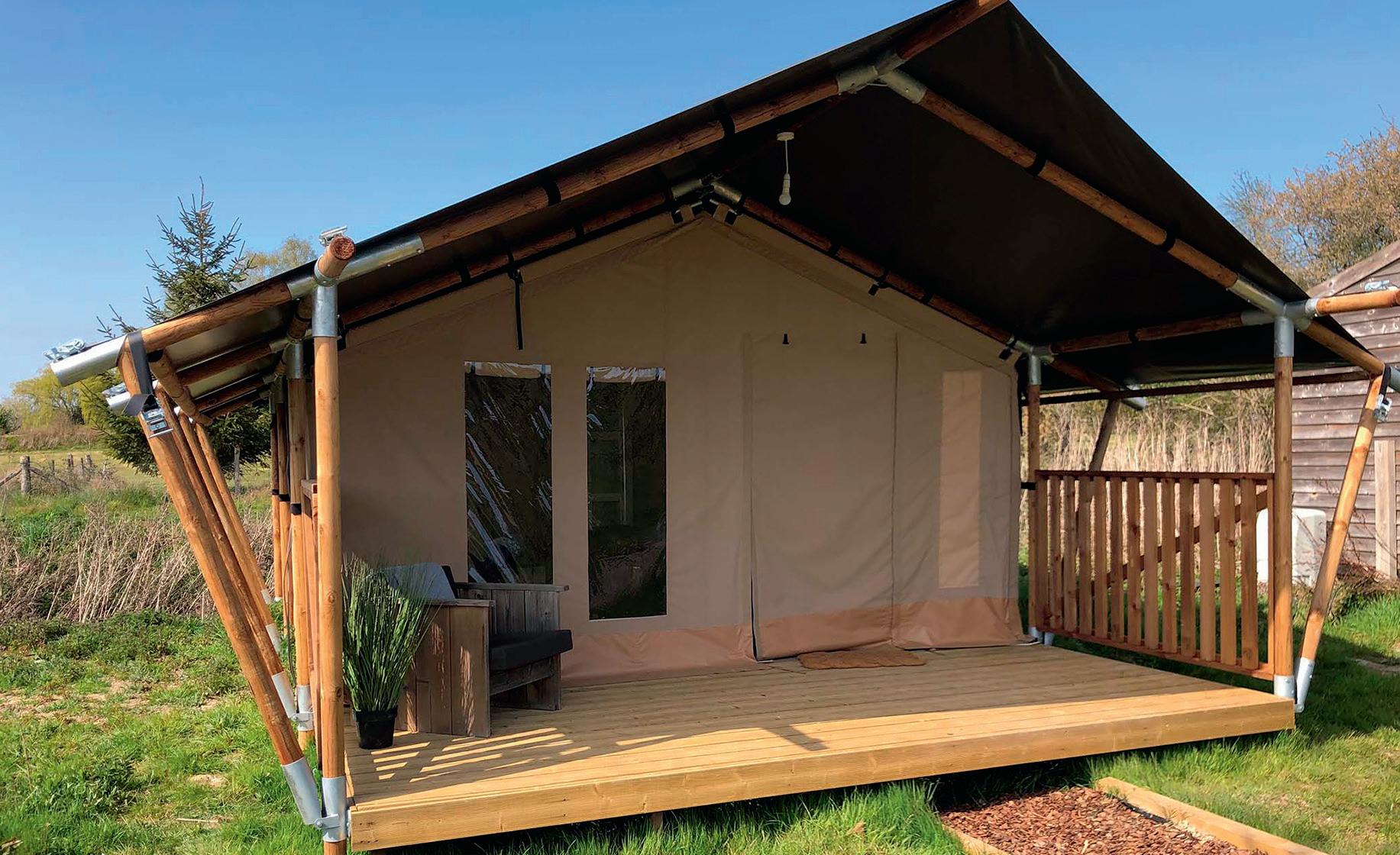
He added many farmers could lose a small amount of their land to a diversification without having much impact on the farm operations.
“We find there are a lot of families getting involved,” he said, adding it seemed to be particularly popular where a member of the family who not necessarily involved with the day-to-day running of the farm wanted a project which could provide extra income.
And tents could generate a much higher nightly rate than a glamping pod.
For a Safari Tent, Mr Scott said businesses in the South West could charge a nightly rate of about £250-£260, but this would obviously differ dependent on location.
“One client charges nearly £600 per night.”

For those considering expanding into glamping, Mr Scott said: “Give it a go, but be aware that planning is likely going to be an issue.
“It is the single biggest barrier to entry.”
Much of the accommodation used in glamping, such as shepherds huts, teepees and pods, represent significant expenditure
DAN YATES
LOOKING ahead to 2023, Mr Yates said the outlook was ‘very favourable’.
“With the British public and overseas visitors having rediscovered a passion for the outdoors, demand for camping, glamping and other forms of outdoor accommodation is expected to remain at high levels or even increase,” he said.
The cost of living crisis could also help boost demand, as expenditure on holidays was likely to reduce.
“Camping offers a very costeffective and extremely enjoyable alternative to other, more expensive holidaying options,” he said.
“Finally, the government has committed to consulting on extending PDR in England again in time for summer next year.
“This is great news for English farmers and landowners.
“If the consultation is successful it will enable them to operate a campsite across the summer without needing to apply
Adding distinct experiences, such as yurts, to an existing campsite business can be an effective way to grow, says Dan Yates.
CREATING a mixed site providing any combination of tent pitches, caravan pitches and glamping enables farmers and landowners to optimise the attractiveness of their site.
Dan Yates added it could also be a cost-effective way of bringing new types of accommodation into the offering.
“If, for example, a farmer or landowner is running a successful campsite under permitted development rights [PDR], they might decide to invest some of that income into some ‘tent’ glamping accommodation, such as a couple of bell tents or teepees,” he said.
“This will enable them to provide accommodation for a new market segment, yet retain the income from their tent pitches.
“A system like this would work well under PDR even if it remains at 28 days, as the landowner gets the core income from camping and the extra revenue from the higher margin glamping.”


He added mixing pitches would enable a farmer to attract a wider
for planning permission, meaning they can benefit from the high returns camping can offer.
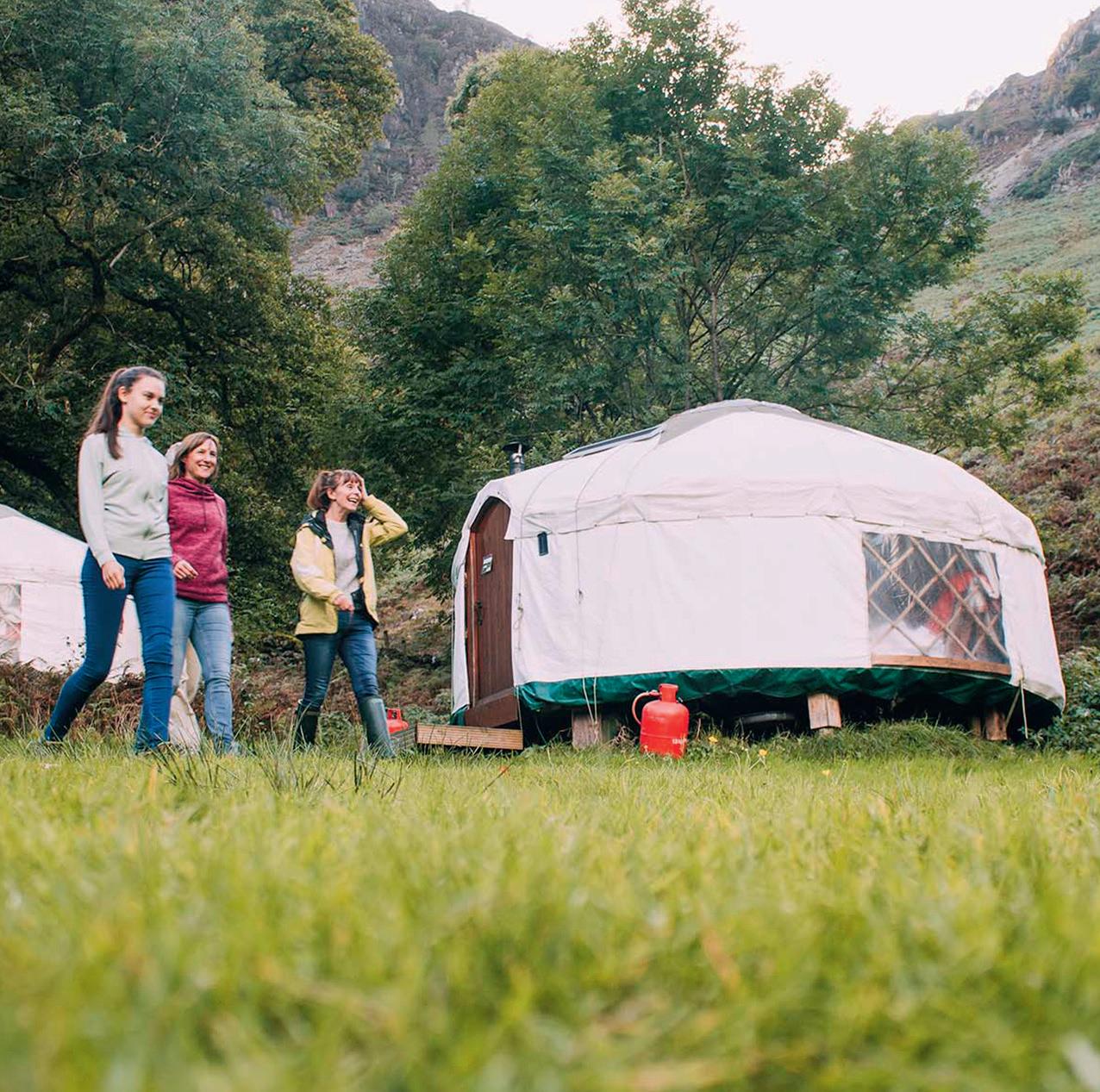
“The consultation proposing a permanent extension to 56 days in Wales has concluded and we hope the outcome will be announced soon.”
Mark Scott said all sites had been ‘rammed’ last year, but figures were down about 20-22 per cent on the year.
But he said if you looked at 2019 to 2022 as a period then you could see the numbers increasing.
He highlighted there were still fewer people travelling by plane, indicating they were holidaying in the UK rather than abroad and, with the cost of fuel, travel and even airport parking increasing, Mr Scott said domestic holidays had a big appeal.
“I cannot see it suddenly collapsing,” he said.

He added people who had enjoyed their experiences over recent years would be looking to repeat the experiences again.
audience and makes the site less weather dependent by attracting caravans and motorhomes.
“This potentially offers the farmer a year-round revenue, providing they have the correct permissions,” he said.
“Of course, this scenario would increase the workload from a small farm campsite, but the financial potential would make it attractive to some farmers and landowners.”
This potentially offers the farmer a year-round revenue, providing they have the correct permissions
Creating an unusual and luxurious glamping pod from a combine harvester is the latest of a series of unusual glamping accommodation allowing a Lincolnshire vegetable farmer to diversify into new areas.
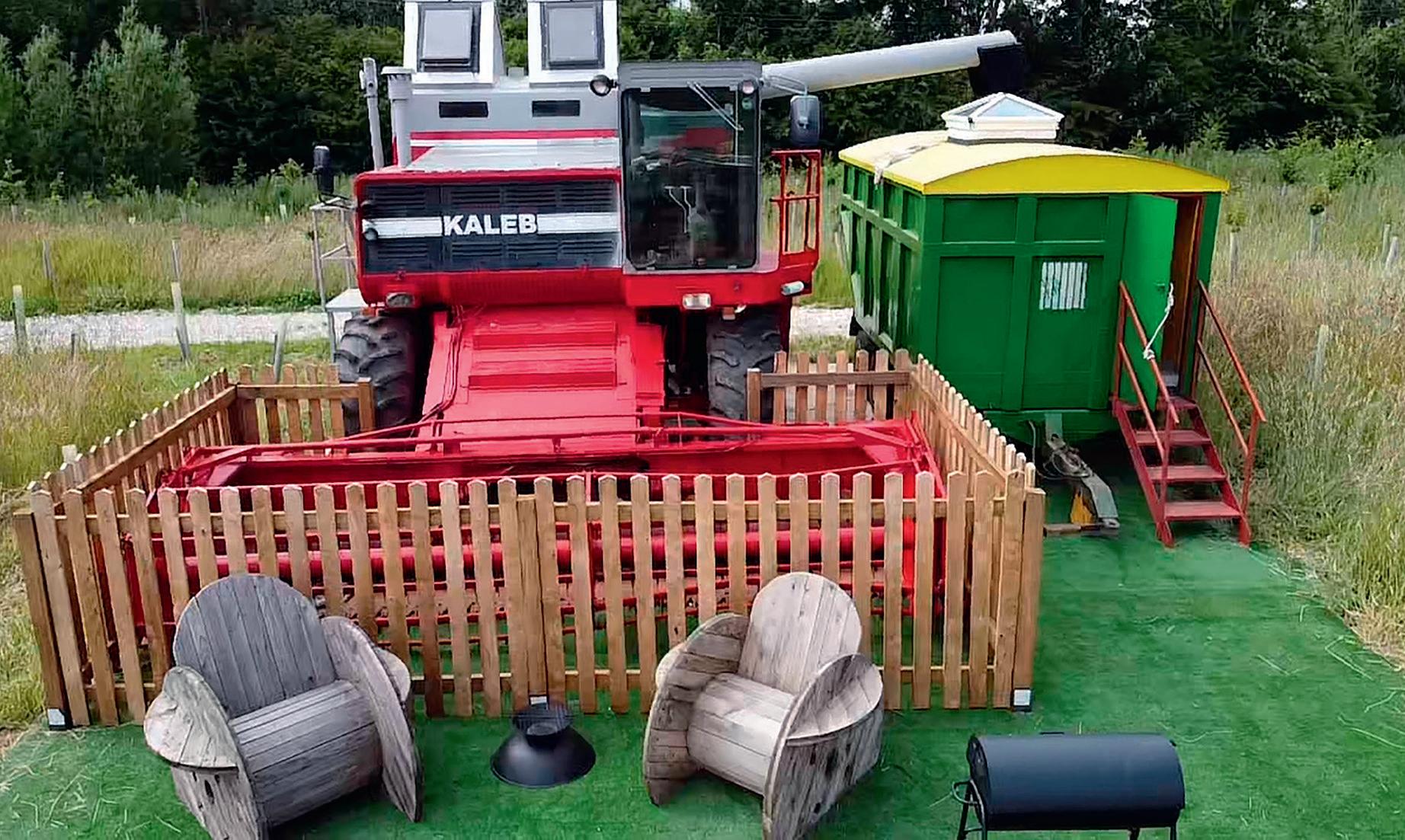
Inspiration struck Will Roughton after purchasing an old Royal Air Force base, RAF Wainfleet, situated in the middle of the farm. They converted the base into holiday lets.
Mr Roughton says there was ‘wasted space’ in a large car park and, wanting to keep with the RAF theme, he decided to purchase a military helicopter.

The helicopter was turned into a glamping pod, including a television and a fridge, as well as its own decking area.
“There are one or two glamping helicopters around, so I then wanted to do something else so we could be the only place in the country with two unusual things,” he says.
Mr Roughton bought an old plane and turned it into a glamping pod which can sleep five people.
While he knew the accommodation would appeal to families with children, Mr Roughton says he is amazed by how many ‘big kids’ there are out there, with the helicopter and plane mainly attracting adult guests.
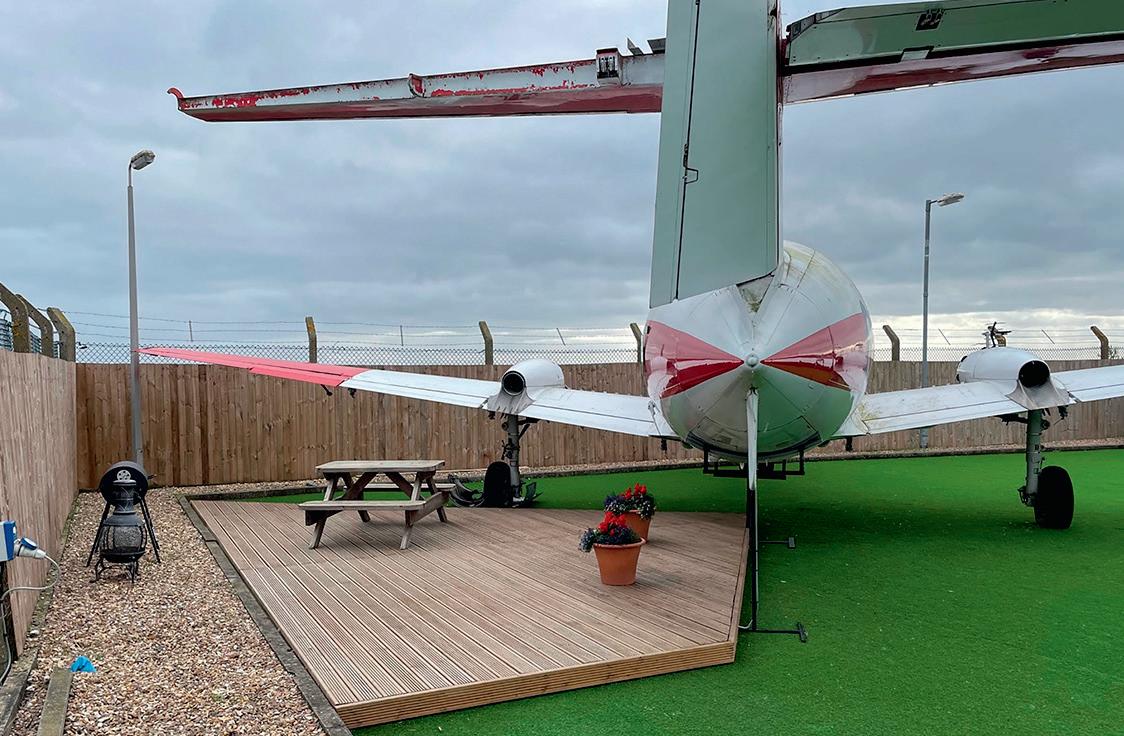
“Then we ran out of space on the base so started to look for other ideas,” he says.
“It gave me the idea to try and hollow out a combine harvester.”
They had started work on ‘Kaleb the combine’ and then the BBC programme My Unique B&B rang, inspired by their aeroplane.
“They came and filmed themselves helping us to convert it,” he says.
done we had the idea to add the trailer with another double bed.”
Originally a Massey Ferguson 860, the accommodation was immediately popular, with full bookings for nearly the whole of the summer holidays.
WILL ROUGHTON“Once we had got the combine
He adds: “We have made it quite luxurious. There is a kitchen sink and a cooker. Families are liking it.”


The accommodation is by the side of a lake, meaning families can go swimming and paddling too.
Looking to the future, Mr Roughton says they have planning permission in place for log cabins around the lakeside.
“However, we will probably have three or four unusual glamping experiences instead,” he adds.

The helicopter accommodation includes a television, a fridge and its own decking area.
The plane accommodation can sleep five people.
Converting a combine harvester into a glamping pod has created a unique selling point for farmer Will Roughton. Alex Black reports.
There are one or two glamping helicopters around so I then wanted to do something elseThe accommodation is a converted Massey Ferguson 860.
With staycations continuing to prosper, there are many choices open to those hoping to capitalise on the trend. James Whilding, managing director of Acorus Rural Property Services, advises on the main options farmers and landowners need to be aware of.


Defra statistics suggest that more than 62 per cent of UK farms are involved in some form of diversified activity.

This can provide business expansion and offers alternative income while also enhancing property assets.
Whether as a change of use of a building or land, in most cases, diversification requires some form of planning consent. The exception may be for temporary uses.
The General Permitted Development Order, in Schedule Two, Part Four, Class B, grants planning permission for ‘the use of any land for any purpose for not more than 28 days in total in any calendar year… and the provision on the land of any moveable structure for the purposes of the permitted use’.
It does not apply, however, if the land in question is a building or is within the curtilage of a building and there are some other restrictions, for example on Sites of Special Scientific Interest.
The time limit was extended to 56 days during the Covid-19 pandemic and was hugely beneficial to many businesses setting up pop-up campsites, for example. However, the ruling has now been withdrawn and is unlikely to be reinstated.
Government policy generally supports sustainable growth and expansion of agricultural and other landbased rural businesses both through conversion of existing buildings and well designed new buildings.
The National Planning Policy Framework and introduction of permitted development rights have increased the options in terms of
planning, although not all local policies are as supportive or have been updated to reflect this change.
With many businesses in rural areas, the issue of sustainability and isolation away from local services and public transport is impacting on a positive outcome at the planning stage.
There are a huge number of options available to rural landowners, from the sublime to the ridiculous.
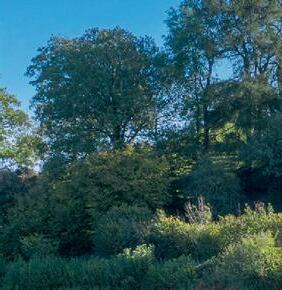
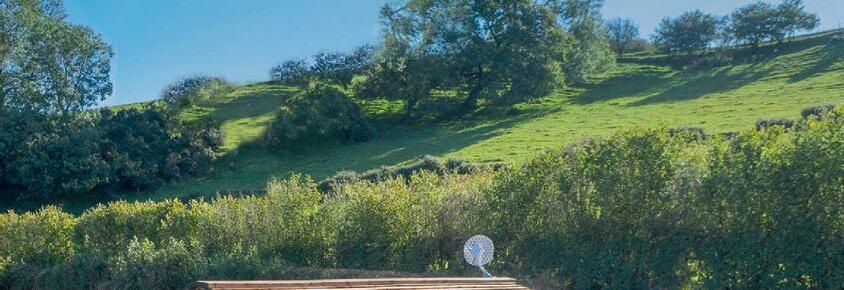
The ‘staycation’ boom over the last few years has seen a continued rise in the number of tourism-based planning applications and, at Acorus, we have been involved in self-catering conversions, yurts, shepherd huts and camping and caravan sites to name but a few.
And the demand appears to be continuing. Research undertaken by Hoseasons in late 2021, suggested the ‘staycation’ boom would continue despite the easing of international travel restrictions.
More than one-quarter of holidaymakers (28 per cent) preferred a staycation over a holiday abroad, while 52 per cent planned to take one of each in 2022.
Parkdean, in its Staycation Market Report 2021, analysed the number of online searches for unique accommodations, with ‘glamping pods’ being the most popular (with an 83 per cent increase in searches between May 2020 and May 2021), shepherds huts next (with a 50 per cent increase in searches over the period) and, similarly, ‘domes’ (49 per cent increase) and cabins (22 per cent increase) also proved popular for online searches.

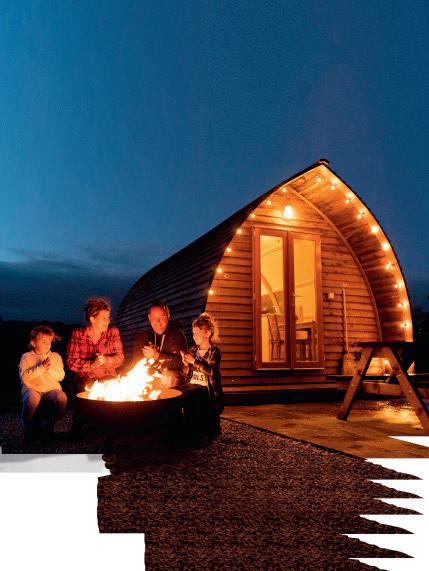
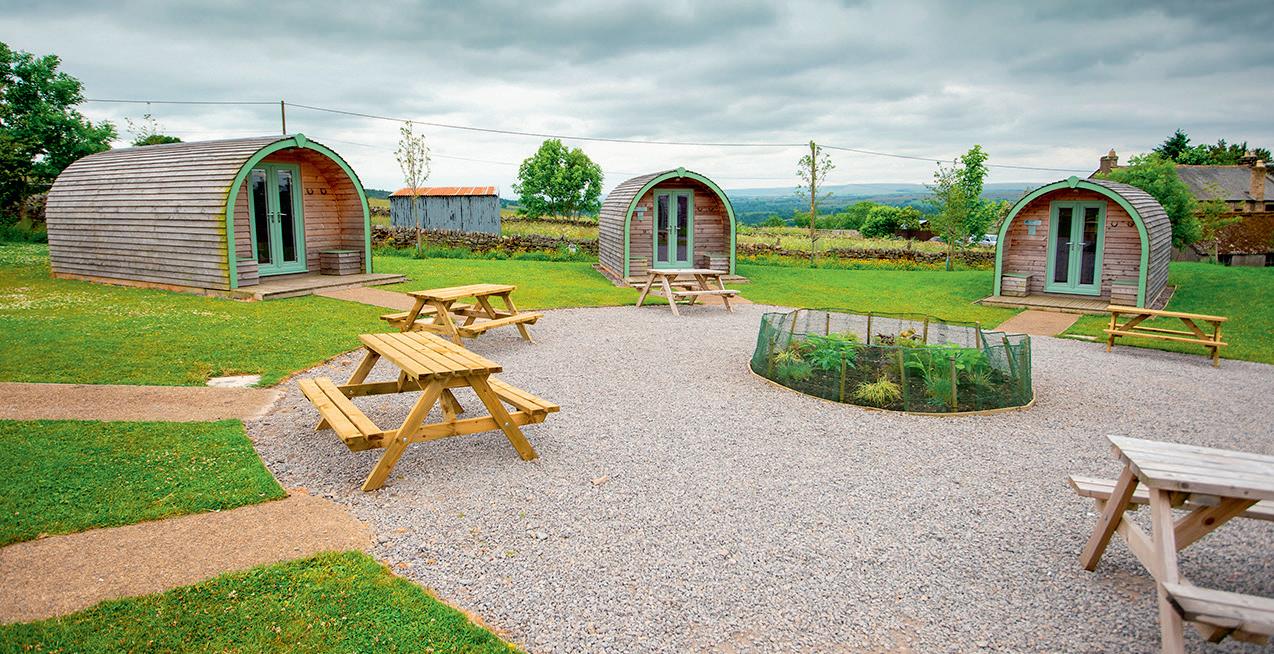
The forecast generally looks goods for the industry and should encourage more rural landowners to consider diversifying into tourism.
 James Whilding
James Whilding
However, with any scheme, it is important to look at the planning implications at an early stage and informal pre-application consultation with the local planning authority is generally encouraged to assess the likely support in planning policy terms and the extent of information needed to validate an application.
Vending machines are rising in popularity as farmers look for new ways to sell directly to the public. Farmers Guardian takes a look at the opportunities in supplying produce around the clock.
Selling produce 24 hours a day is allowing farmers to sell to more customers directly in convenient locations or at the farm gate.
Cutting out the middleman is a big appeal, with vending machines allowing farmers to make sales around the clock without the headaches of extra staffing as the public look to purchase more local produce.
Clare Hetherington, a dairy, arable and sheep farmer who farms 161 hectares (400 acres) with her husband, Joseph and family, on the Solway Coast in Cumbria, says they were already selling milk in the farm shop since 2017 and wished to expand their customer base.
But as they are busy on-farm, their shop, The Moody Cow, could only be open so many hours a day.
She says installing a vending machine meant they could be open 24 hours and reach many more people, such as shift workers and early starters.
“We also loved the idea of supplying other local produce and working with other local providers,” she says.
As a First Milk member, the family decided to become part of the co-operative’s new Golden Hooves franchise.
First Milk is predominantly a B2B business, working with customers as their long-term supply partner.
But establishing a direct-to-consumer sales channel was a ‘strategic opportunity’ for First Milk, connecting its farmer members with their end product and enabling them to tell their story of regeneration and drive additional value.
Before becoming part of First Milk’s Golden Hooves franchise, The Moody Cow could only open for so many hours a day due to its owners being busy on-farm.
 CLARE HETHERINGTON
CLARE HETHERINGTON

First Milk corporate development director Stuart Donald says: “Our direct-to-consumer proposition seeks to take advantage of two key trends: consumer awareness and activism regarding the environment, and the rise of hyper localism – consumer interest in food security, traceability and accessibility.
We launched our first Golden Hooves vending site in May at Hooks Farm in Derby and we have just launched the second site in Cumbria, with more in the pipeline in the coming months.”

First Milk members can sell milk, cheese and other produce on-farm through vending machines, with the franchise supporting set-up, sourcing, supply, payment and central marketing.
The initial ambition is to grow to 20-25 on-farm vending franchises over a two-year time period.
Ms Hetherington says they liked the idea of helping expand the Golden Hooves brand.
“Making our co-operative bigger and stronger can only be good for the future of all First Milk members,” she says.
As they had been selling direct already, a lot of the paperwork was already in place which just needed ‘tweaking’ to fit the system.
“It took a few weeks to get into our new routine but now we are settled and it is going from strength to strength. Footfall is steadily increasing, and our customers are getting a real taste for the delicious produce available.
“We held an open day, which was very busy, and we were so proud to show our customers around the farm and for them to meet the cows that provide their milk. They were all fascinated by just how much goes into producing good milk. They said it was good to meet the cows and see how they are cared for.
“They loved hearing about regenerative farming and how the cows help to nourish the earth.”
She adds the expertise from First Milk has helped move the business to the next level.
However, First Milk has also listened to their thoughts and ideas and is happy for the family to shape how their business goes forward.
With a caravan park also on-site, the vending machine has an opportunity to work together with the other enterprises on the farm.
“We do find our caravanners can call at any time they arrive to top up with milk or cheese for a late-night cuppa,” she says.
“As the Solway Coast is dotted with other Caravan parks, we also find that other caravanners also call en route to their vans.
“We have had children nipping down with their parent’s card, with permission, for a sneaky milkshake also.


We have had children nipping down with their parent’s card, with permission, for a sneaky milkshake also
Installing a vending machine means the family has been able to expand their customer base.
“We have a cycle path that runs alongside our park, and we have lots of walkers and bikers calling in for either refreshments or to stock up with milk before they head home.”
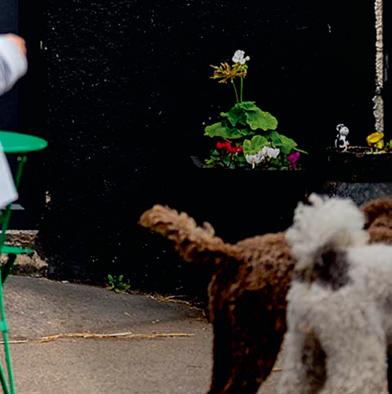
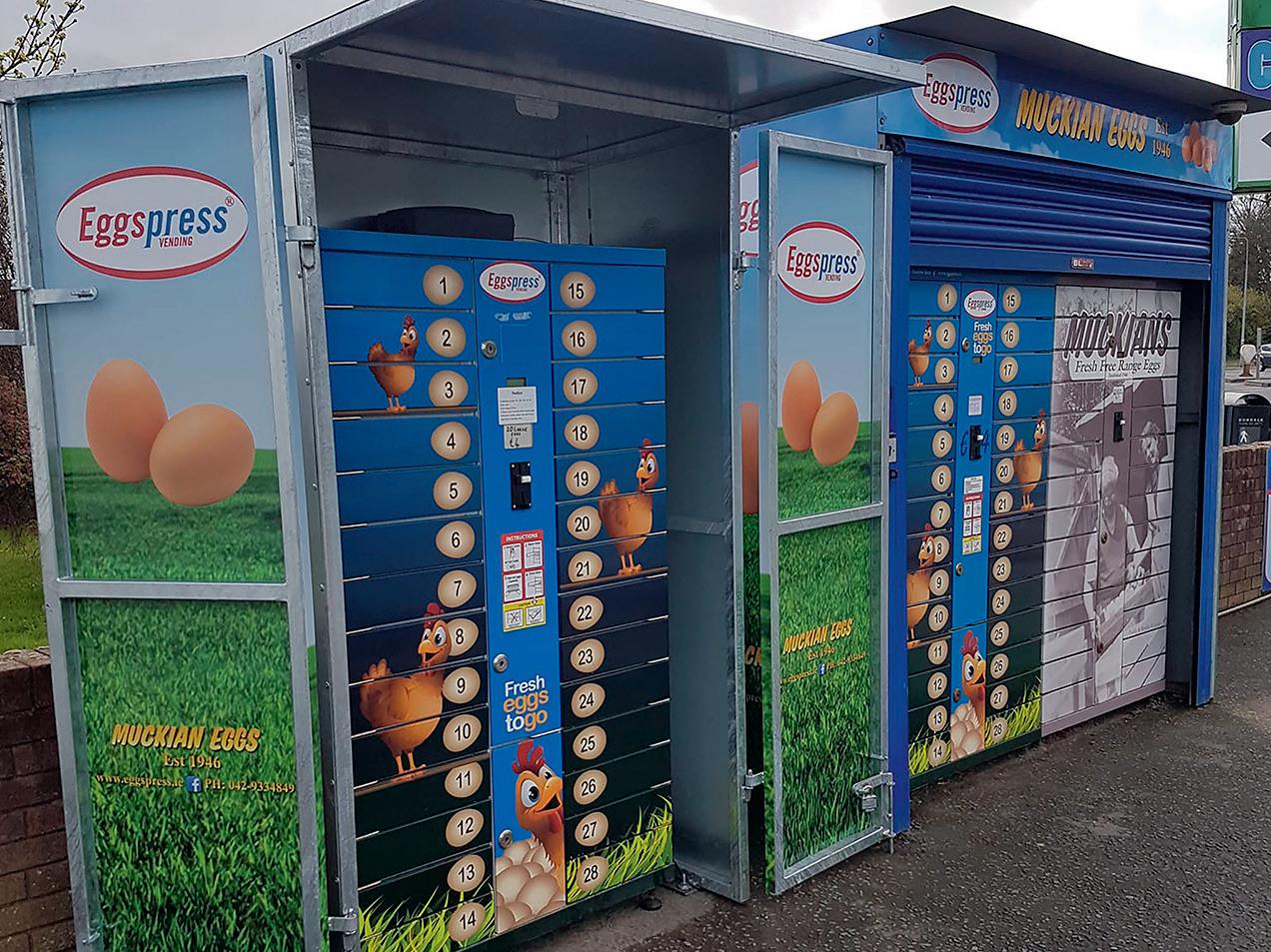
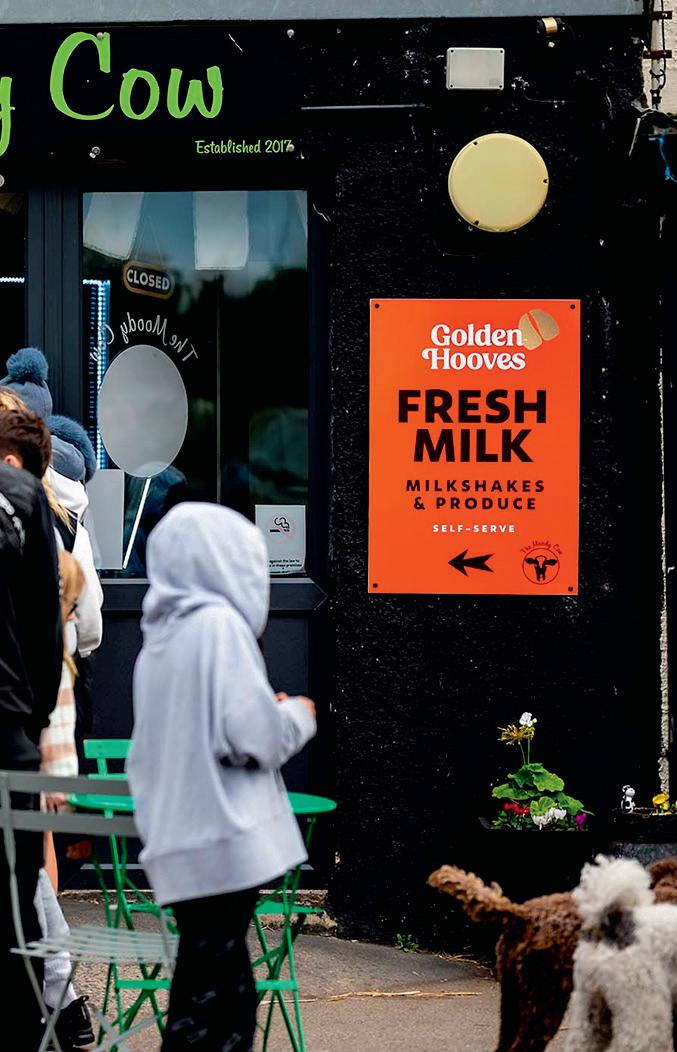
FROM setting up a vending machine to sell their eggs around the clock, Eggspress vending machine founder Patrick Muckian is now exporting machines around Europe.
Mr Muckian’s parents set up Muckian Eggs in 1946 in Dundalk, Ireland, packing eggs to sell to retailers.
They had always sold eggs directly from the packing centre, but Mr Muckian felt they were missing out on sales when the premises was closed.
Looking for a machine which could sell eggs without needing someone to be on-site, Mr Muckian and his brother created the automatic Eggspress vending machine.
The machines have 28 compartments and send a text message to the owner when 24 have been sold to allow them to stock up, meaning they never have to worry about running out without being notified.
Mr Muckian says: “It is not just
eggs, you can sell almost anything. Any potatoes or fruit and vegetables.”
The machines can also be customised with advertising.
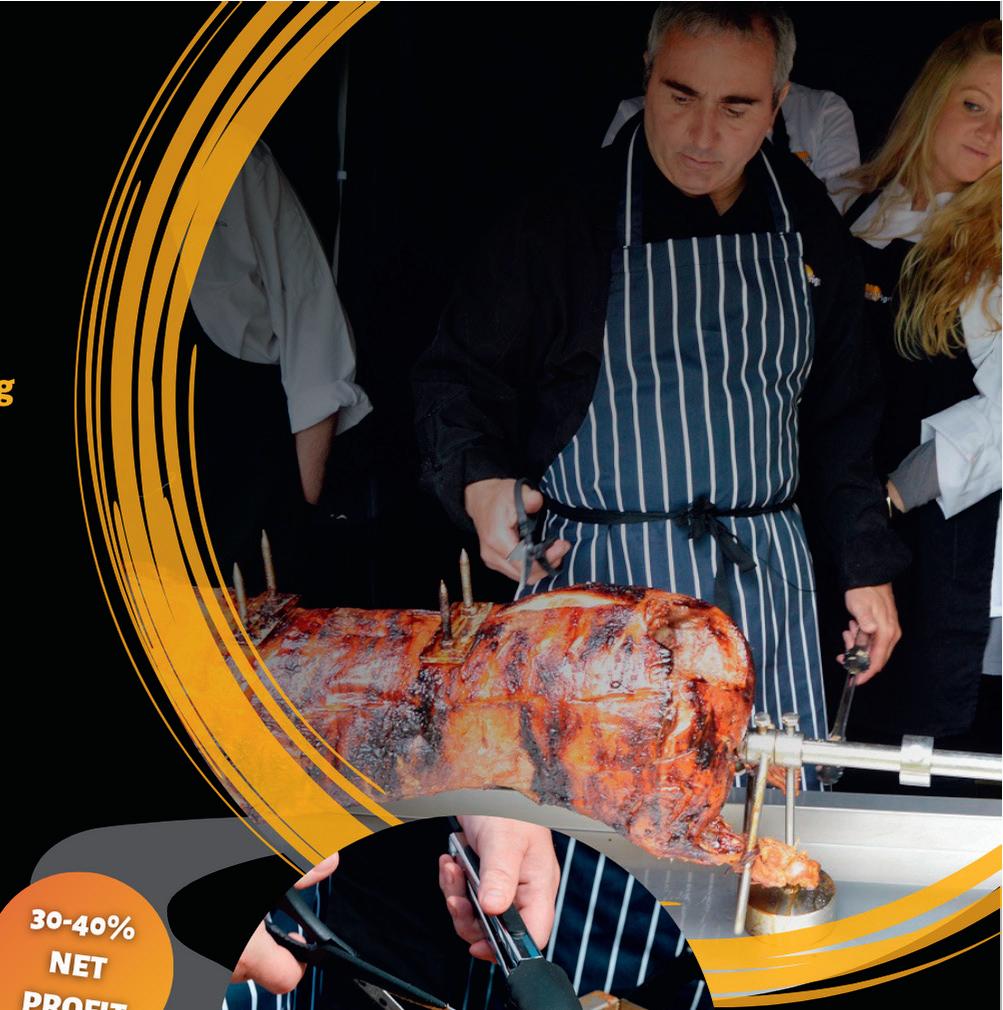
Mr Muckian says the machines are being placed anywhere from the farm gate to the forecourts of petrol stations and car washes, anywhere people can park alongside it.
He has now sold machines around Ireland and the UK, as well as into mainland Europe.

And he is always looking to embrace new technology, including solar panels
to run a machine installed in France entirely on renewable energy.
“In the beginning it was coins only,” he adds.

“As society is moving more over to cards, we have put a card reader on it. It has taken off. I have sold machines into Scotland and have taken the cash off them as they wanted to go card only.”
Following the success of the business, Muckian Eggs now only supplies a few supermarkets with people willing to travel to find local, quality produce.

After taking the plunge into an on-farm diversification in 2004, the National Forest Adventure Farm has become an attraction appealing to the whole family. Alex Black reports.
Having a wide range of ventures on-farm from a farm park to a function room, alongside the commercial farming business, has helped a farming family take control of their own future.
With different parts of the business catering to different audiences, brothers Tom and Ivor Robinson have looked to insulate the business from economic uncertainty and become price setters rather than price takers.
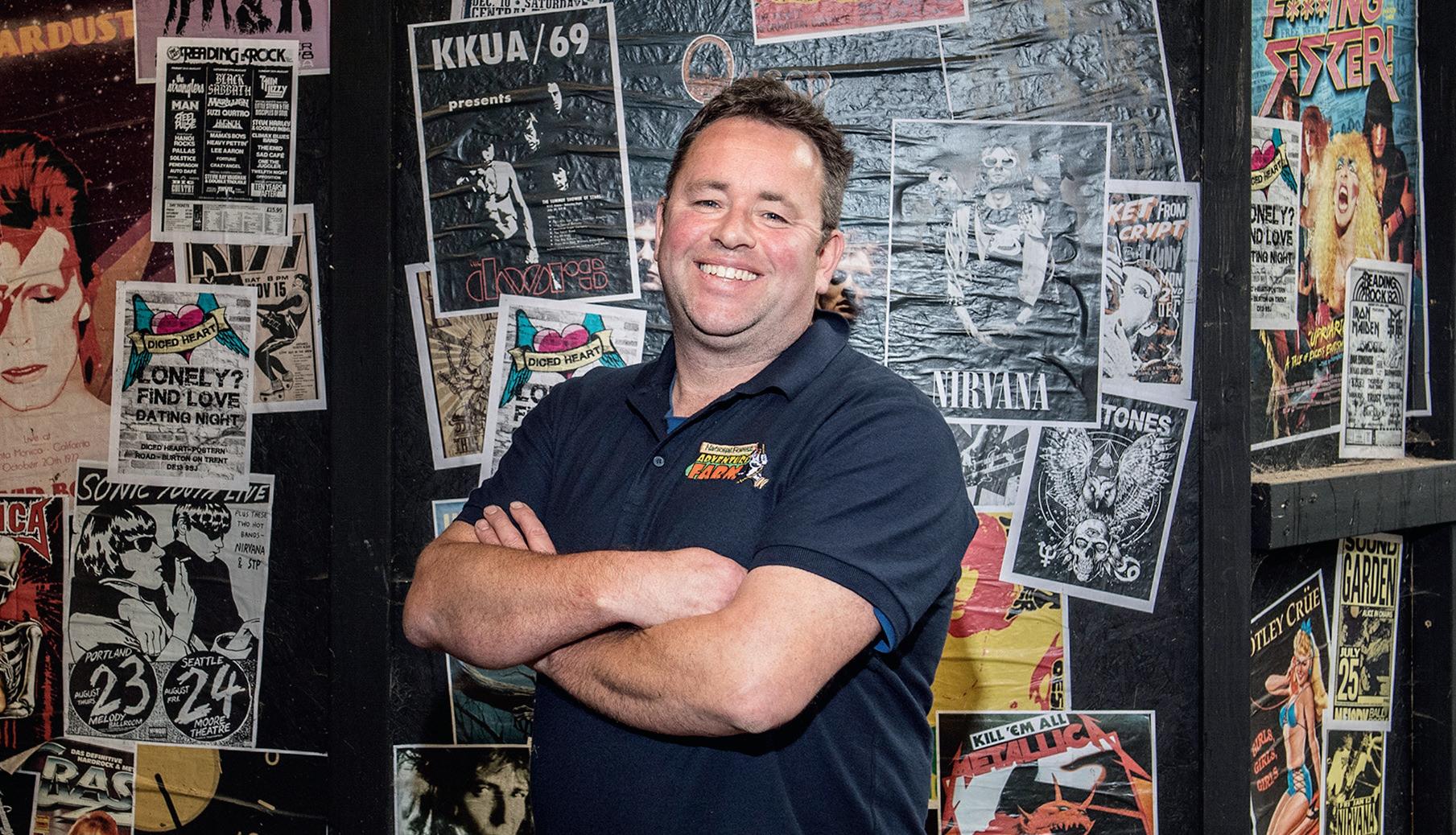
The National Forest Adventure Farm, based in Tatenhill, near Burton upon Trent, has completed a significant three-year diversification programme, which has seen more than £800,000 invested in new areas of the farm attraction, including a childcare facility and The Deer Barn, a rustic style event venue for everything from business conferences and celebrations.
The brothers embarked on their first diversification journey in 2004 by opening a maize maze.

“I would like to tell you we had done our market research,” Tom says.
“I had heard all about maize mazes. Very late on in the year we thought we would dip our toe into the water.”
The venture had a ‘reasonable first year’.
Ivor says: “We quickly learned that a maize maze as a standalone is totally weather dependent.
“There were days we had a couple of hundred people and days we had nobody on-site.”
Before setting out on their diversification journey, they had been on a programme of expanding the dairy herd.
“We took advice and realised it was not really going to work for us,” Tom says.
“We decided to sell the cows in 2005.”
Instead, they looked to best use the resources that they had on-farm and look for other opportunities.
Now the farm has a flock of about 430 ewes.
Tom says: “It is something we can also utilise as part of the farm park. We do a ‘lambing live’ event. We can use the commercial farm.”
After launching the maze, they joined the National Farm Attractions Network.
“The next evolution was to start to get more organised and look for other opportunities. That is how we have tried to evolve,” Tom says.
They have a core staff of around 15, with total numbers of employees ranging from around


40-160 dependent on the time of year. Seasonal diversifications are a big part of the business, with upcoming Halloween events for the whole family.
Daytime activities at the ‘spooktacular’ include attending the farm park alongside pumpkin picking, magic shows and broomstick training.
But at night, Tom says they will be catering to a ‘completely different audience’ with their Scream
Fest, with horror attractions aimed at adults.
Ivor adds Halloween is a ‘full on’ time of year for them.
Making connections between the businesses to make best use of their resources and staff is an important part of the organisation.
For example, the on-site catering team can work across the farm
IVOR ROBINSONJust go out there and look at what you have got. If you are right next to a big population you may be able to try something like we haveIvor Robinson
he says, adding it was all about utilising the resources you had.
Looking at the current economic situation, Ivor says he is heartened by their most recent ventures in the nursery and The Deer Barn venue offering them ‘some diversity in diversification’.
“It means we are not solely reliant on family day visits. What is good about the adventure farm is we are in control of where we set our prices going into next year,” he says.
Tom adds: “When it comes to setting prices, we have total flexibility to set our own. When we were just supplying markets or sending
milk off, it was a decision we never we had to make.
“It is a privilege, but you have to work hard for it.”
The business will now be undergoing a period of consolidation, looking for any tweaks they can make to the business which the brothers believe is vital to success.

“A good example of that is The Deer Barn. Viewings started in May time. We identified that there might be a need for a function room in the area,” Tom says.
He says many people had got married during lockdown with limited guestlists and now want to have a celebration.
“What we had not expected was people asking about holding wedding ceremonies. That is the next thing we might consider. The more people you talk to the more ideas you get.”

This year’s Farm Business Innovation show is on November 2-3 at the NEC, Birmingham. See farmbusinessshow. co.uk for more.
park and the events venue, The Deer Barn.
The Deer Barn caters to a different audience again, with the venue closed off from the public. The farm park is closed at night, unless there is an event, allowing privacy for functions.
“It has got a different market. It is hard to gel different enterprises together and try and utilise staff. If bookings continue to grow we will probably end up having a unique team for it,” Ivor says.
The farm also has a nursery and pre-school on-site.
“People like the idea of their children growing up on a farm,” Ivor says.
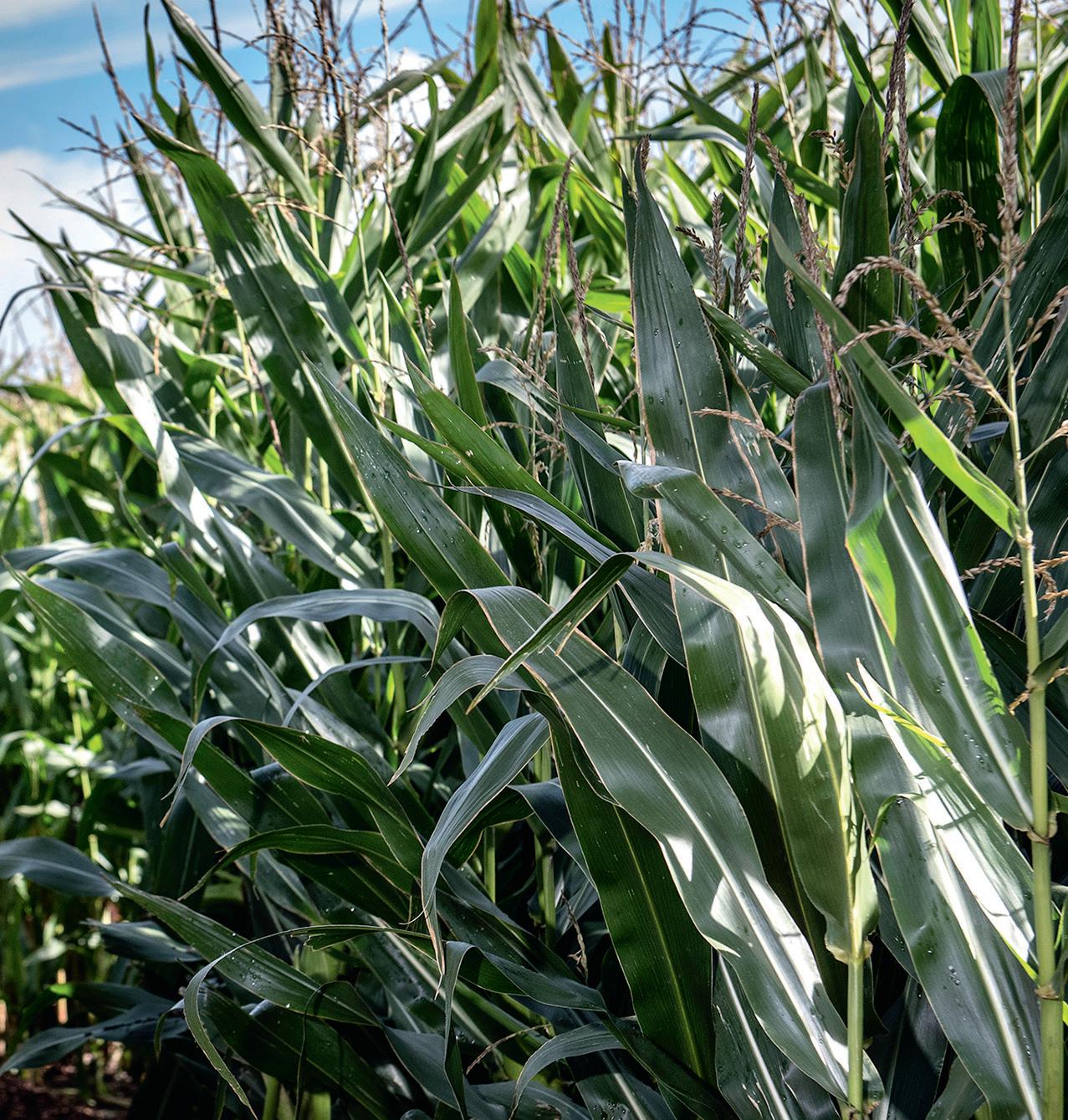
As part of the nursery, children go out onto the farm park, they go into the kitchen garden and dig up vegetables and visit the animal barn to help with caring for the animals.
“It fits quite well with the existing farm park business. When the nursery kids are in, we are still not open mid-week during term time, so they get the whole place to themselves.
“It seems to work really well.”
Tom adds: “When we first put in a planning application that was one of the main arguments that we used.”
And it aligns well with many
Government policies, including teaching children about food production and tackling childhood obesity.
But Ivor warns other farmers that diversification can ‘take over your life’.

“It is not as easy as it looks to get it right. It becomes a bit all consuming,” he says.
“On the flip side, it is enormously satisfying putting an event together.”
He advises farmers to ‘do what we did not do’ and undertake some proper planning, budgeting and market research before launching a new venture.
“Find something to set you apart,” he says.
He also advises people to use professional help.
“The more you look at diversification, you will find some really good professionals out there.”
They highlight the National Farm Attractions Network as having been a helping hand, as well as attending the Farm Business Innovation show.
“Just go out there and look at what you have got. If you are right next to a big population you may be able to try something like we have,”
Whether starting with a blank page for a new build project or working within the constraints of upgrading and restoring a historic property, there is much to consider before a pencil is lifted.
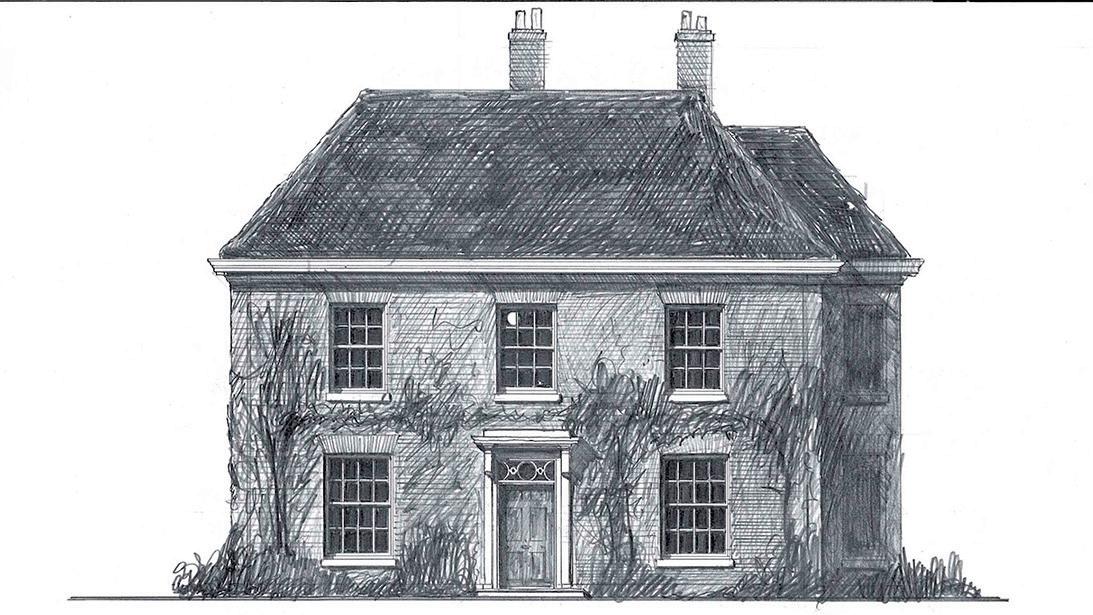
Robert Cox, director of ADAM Architecture, which specialises in classical and traditional design, says the replacement, redesign or upgrading of an existing farmstead — possibly one that has stood for several hundred years, but no longer presents the optimum space or environment for modern day life — creates many challenges.


“The farm, including the main house, has evolved down the ages, often bringing many buildings together in a central core, or a number of cores on larger estates,” he says.
Mr Cox adds the estate may also
The original features of a building should be retained and celebrated.
include ancillary buildings, such as former homes for workers.
“All of these buildings may require differing levels of refurbishment and can also be used by the modern landowner, who no longer employs an army of estate workers, either for private rental income or to give extra function spaces for the main house, such as ‘party barns’.
“In cases where the estate has these additional buildings, it is important to encourage the adoption of a cohesive masterplan approach.”
But Mr Cox adds it is important not to lose tradition in the rush to modernise farming and architecture is one place it can be preserved.
When facing a rural design project, Mr Cox says he considers what he can do to ensure the work will have the best chance of consent and what complements the location.
“Firstly, I will study the other buildings in the immediate locality,

their style and features and, in the case of a new build or extensive rebuild, it is essential to understand what those key local features are.”
He says across the UK there are distinctive regional styles.
“For me there are four main factors in assessing local style: materials, fenestration including doors and door surrounds, eaves and the general composition and hierarchy of the property.
“If it is a reconstruction or renovation, then many of these features will be evident already, although sometimes obscured by later, often unsightly or unsuitable add-ons.”
He adds, for ancillary buildings it is also important that, where possible, the original form, features and characteristics of the structures are retained and celebrated.
“Internally we should also keep what we can — beams, fireplaces, floorings — while transforming the space to work for now and the future in terms of utilities, heating/insulation, layout and comfort,” he says.
“The move towards retro-fit is about using existing buildings and their materials, wherever possible, but with historic buildings, I think it is also important to add a new ‘chapter’, creating new life and purpose, but in a way that respects its heritage.”
He adds ultimately, the aim is for any building to be ‘a good neighbour’.
“So, the process is one of conforming to the local ‘vernacular’ in terms of aesthetic when considering the design of new country houses, farm houses and ‘rectory style’ properties or for upgrading existing buildings.
“As enquiries for traditional design properties steady across the home counties, their spread of distinctive local/county and historical styles presents a challenge for the architect - not just in terms of the look and the detail, but also to incorporate all modern services and meet current demands in the most discrete way.”
As farming looks to modernise, ADAM Architecture’s Robert Cox takes a look at what can be done to bring farm buildings up to date while respecting tradition.
I think it is also important to add a new ‘chapter’, creating new life and purpose
ROBERT COX
Renovating old buildings for commercial gain should seek to balance tradition with progress, says Robert Cox.



















Artisan Grower: From the city to the farm – becoming an agripreneur




Tom Bell on maximising your income through holiday


















Brunyee from Farm ED on building a regenerative farm diversification enterprise.



The rural sector has only ‘scratched the surface’ when it comes to new enterprises with a range of creative uses for land an option for those looking to diversify.
That was the message from Marrons Planning, which said many had opted for more traditional options, such as barn conversions or selling directly to the public.
Marrons Planning planner Jacqueline Jackson said: “However, there is huge potential for farms and estates to develop more novel enterprises – such as selling off carbon to developers and rewilding –alongside their core business.”
Reusing redundant buildings for storage or residential accommodation was also a popular route for farmers and landowners, Ms Jackson added.
“However, we have recently seen more creative ideas, particularly relating to tourism and leisure including glamping sites, wedding and event venues, extreme sport facilities, golf clubs, fishing lakes, spas and health clubs, as well as marinas, renewable energy, telecommunications and educational facilities,” she said.
“One of our clients also helped other agricultural landowners in his local area with irrigating and draining land.
“It was so successful, he was able to expand his operation and provide water and drainage systems to landowners across the country. We helped him set up his own commercial part of the farm that deals with the diversified business.”
The recently introduced Envi-
it cannot be developed or farmed.”
With the national target to be carbon net zero by 2050, now has never been a better time for landowners to seek diversification incomes from leasing their land to renewable energy schemes, such as wind and solar farms, and carbon offsetting, she said.
Ms Jackson added planning approval may be required for a move away from agricultural land use.
“There may also be opportunities to explore permitted development rights, where full planning permission would not be required,” she said.
ersification opportunity aspirations, and various measures and options should be considered to ensure development is considered acceptable.”
Ms Beresford said people often came to them to say they had an idea in mind for a piece of land.
“Sometimes they have an interest in a particular business opportunity or they may have an unused building that is creating a maintenance liability,” she said.
“The diversification process from a planning perspective always starts with a bespoke appraisal, which looks at, opportunities, constraints, policy requirements, and emerging local authority plans.
JACQUELINE JACKSONronment Act 2021 requires all development schemes in England to deliver a mandatory minimum 10 per cent biodiversity net gain (BNG) and the newly created habitat needs to be protected for at least 30 years.
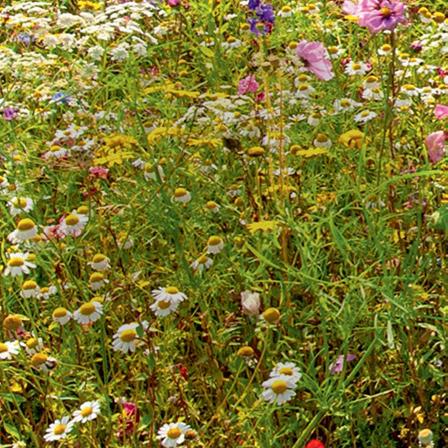


Marrons Planning planner Lizzie Beresford said: “BNG is still a very new and emerging market.
“However, it could prove particularly useful for landowners who are sat on land of low productivity – maybe its location presents no tourism advantages or
“By their nature, most rural diversification opportunity sites are within the countryside or more sensitive areas where local and national planning policy may seek to limit development – making obtaining planning approval more challenging.

“Similarly, sites located within the green belt, a conservation area, national park or Area of Outstanding Natural Beauty may be more complicated to deliver.
“It is in these situations where thinking creatively and innovatively can help realise your div-

“This is then followed by creating short and long-term planning strategies for how aspirations can be achieved, which could include surveys and initial discussions with the local planning authority.”
Looking ahead, Ms Jackson said diversification opened up opportunities for the next generation and she expected to see more in the future.
“Getting started can be daunting, but with the right professional advice and support there is no limit to how creative and successful you can be.”
Biodiversity net gain is still a new and emerging market, but could prove useful for landowners with land of low productivity.
There is huge potential for farms and estates to develop more novel enterprises – such as selling off carbon to developers and rewilding – alongside their core business